#Centennial Plaza
Explore tagged Tumblr posts
Photo
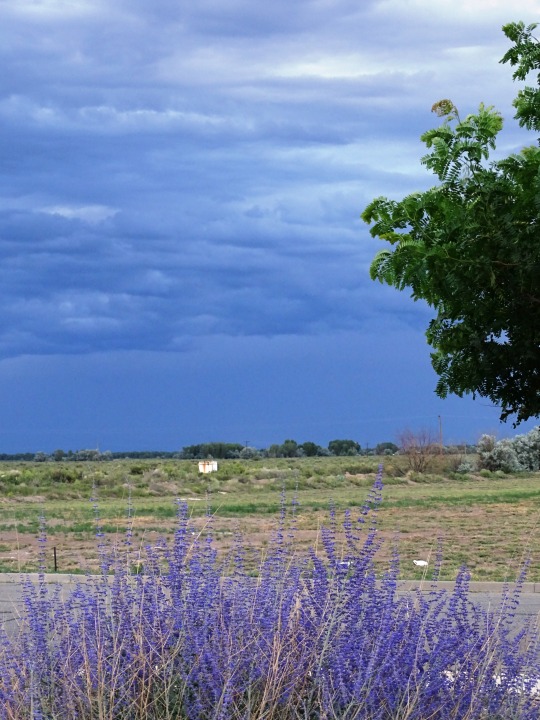

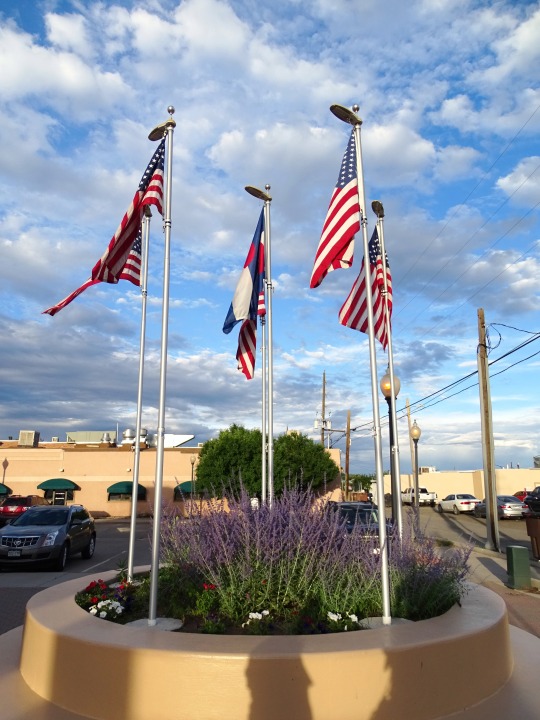
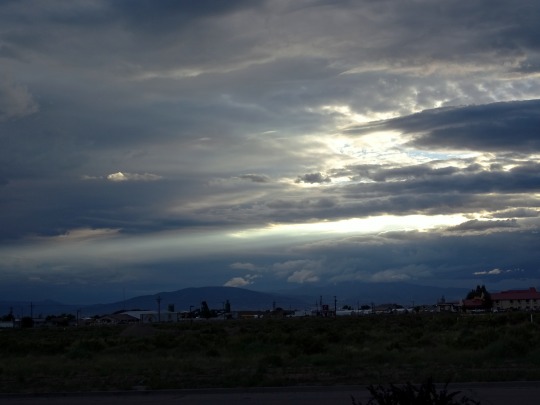

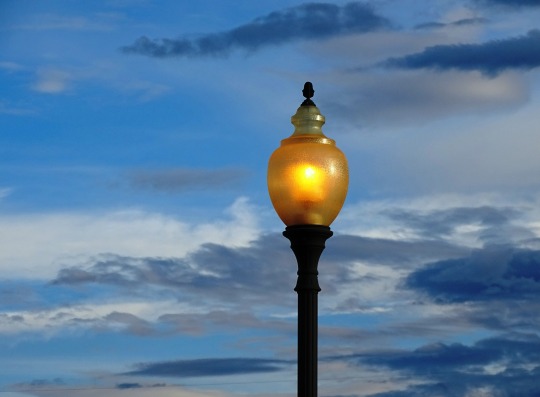
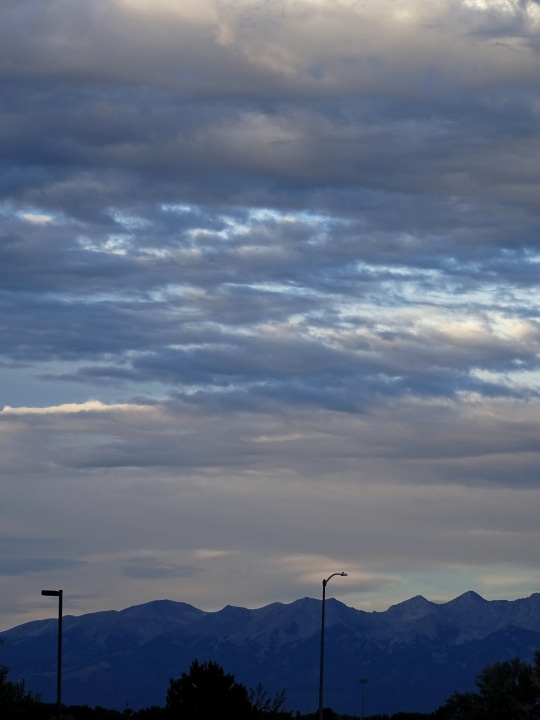


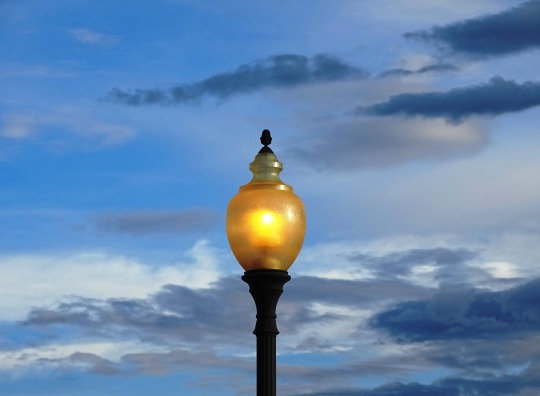
Alamosa, CO (No. 4)
The San Luis Valley was ceded to the United States by Mexico following the Mexican–American War. Hispanic settlers began moving north and settling in the valley after the United States made a treaty with the Utes and established a fort in the early 1850s. Prior to the Mexican war the Spanish and Mexican governments had reserved the valley to the Utes. Later in the 19th century Anglo settlers began to settle in the valley and engaged in mining, ranching, and irrigated agriculture. Today the valley has a diverse Anglo and Hispanic population.
The San Luis Valley is the broad, generally flat, valley at the headwaters of the Rio Grande in south central Colorado and far north central New Mexico. The northern portion of the San Luis Valley is an endorheic basin; surface water does not exit this area. Irrigated agriculture is possible in the area due to groundwater and streams fed by the average 100 inches of snow the surrounding mountain ranges receive. The southern portion is drained by the Rio Grande.
There is no clear southern boundary but the term is generally used to include the San Luis Hills of southern Colorado and the Taos Plateau of northern New Mexico. About 50 miles from east to west and about 150 miles from north to south, the valley is bounded on the east by the Sangre de Cristo Mountains and on the west by the San Juan Mountains.
Source: Wikipedia
#San Luis Valley#Centennial Plaza#US flag#street lamp#street light#USA#evening sky#dark clouds#original photography#downtown#vacation#tourist attraction#landmark#lavender#San Juan Mountains#summer 2022#Rocky Mountains#Colorado#landscape#countryside#I really love the first pic#architecture#small town#Alamosa
8 notes
·
View notes
Text
Late notice but
Today 10/5 is an international day of action protesting one year of the Gaza genocide!
Find a protest near you today or tomorrow 10/6! If you're in the US, look at the links below, from the US Campaign for Palestinian Rights!
October 5, 2024
Note: Tumblr has capped the number of outgoing links you can use in one post. Go to the USCPR link above and click on a protest for a flyer/organizer info for each and every one of these events.
Albany, NY | 4:30PM Dana Park
Albuquerque, NM | 2PM Robinson Park
Amherst, MA | Amherst Town Common
Anchorage, AK | 2PM Townsquare Park
Atlanta, GA | 2PM 190 Marietta SW
Austin, TX | 1PM Austin City Hall
Birmingham, AL | 2PM Victoria Square
Blacksburg, VA | 3PM Pylons
Boston, MA | 2PM Cambridge City Hall
Burlington, VT | 1PM Battery Park
Charleston, SC | 2PM Marion Square Park
Chicago, IL | 2PM Water Tower Park
Cleveland, OH | 3PM 11804 Lorain Ave
Columbus, OH | 2PM Goodale Park
Corvallis, OR | 12 NOON County Courthoue
Dallas, TX | 12PM The Grassy Knoll
Denver, CO | 12PM 400 Josephine St
Detroit, MI | 2PM 5 Woodward Ave, Detroit
Dover, DE | 12 NOON 250 Gateway S Blvd
Fort Myers, FL | 6PM Centennial Park
Gainseville, FL | 2PM City Hall
Honolulu, HI | 11AM Ala Moana & Atkinson
Houston, TX | 2PM Houston City Hall
Indianapolis, IL | 2PM Lugar Plaza
Kansas City | 1PM Mill Creek Park
Kona, HI | 12:30PM Old airport by the skating rink
Las Vegas, NV | 2PM 3449 S Sammy Davis Jr Dr
Little Rock, AK | 4PM 1200 Main St
Los Angeles, CA | 2PM Pershing Square
Louisville, KY | 3PM Water Front Park
Maui, HI | 11AM Kapuka’ulua (Baldwin Beach)
Memphis, TN | 2PM City Hall
Miami, FL | 5PM Torch of Friendship
Milwaukee, WI | 2PM Zedler Union Square Park
Missoula, MT | 7PM 200 W Broadway
Nashville, TN | 2PM Centennial Park
New York, NY | 2PM Times Square
New Haven, CT | 1PM New Haven Green
New Orleans, LA | 5PM Congo Square
Ottawa, Ontario | 2PM Parliment Hill
Orlando, FL | 4PM Orlando City Hall
Pensacola, FL | 5PM Palafox & Gregorary St.
Pittsburgh, PA | Film screening, 3PM 100 S Commons St.
Portland, ME | 5PM Monument Square
Portland, OR | 3PM Unthank Park
Providence, RI | 3PM RI State House steps & 5:30PM 1 Finance Way
Raleigh, NC | 3PM Moore Square
Rochester, NY | 1PM MLK Park
Sacramento, CA | 2PM West steps of the Capitol
Salt Lake City, UT | 2PM 125 S State St
San Antonio, TX | 1PM Travis Park
San Diego, CA | 2:00PM 1600 Pacific Highway
Seattle, WA | 2PM TBA, with car caravans from Spokane, Pasco, Ellensburg
St. Louis, MO | Liberation weekend, 9AM-8PM 475 East Lockwood Ave
Tampa, FL | 2PM Bank of America Plaza
Toronto, Ontario | 2PM Yonge Dundas Square
Urbana, IL | 2PM 101 E Main St
Ventura, CA | 2PM 501 Poli St
Washington, DC | 4PM White House
West Plains, MO | 12 NOON Downtown Square
Wichita, KS | 12:30PM Spirit Aerosystems
October 6, 2024
Amityville, NY | 1PM LIRR
Boston, MA | 1PM Boston Common
Green Bay, WI | 5:30PM Leicht Memorial Park
Los Angeles, CA | Vigil, 6:30PM Echo Park Lake
Minneapolis, MN | 1:30PM Gateway Park Fountain
Ontario, CA | 1PM Euclid & C St
Paterson, NJ | 2PM Palestine Way with Gould Avenue
Roanoke, VA | Vigil, 6PM Heights Community Church courtyard
San Diego, CA | 4PM Centro Cultural de La Raza
San Francisco, CA | 1PM 16th & Valencia
San Jose, CA | 12 NOON City Hall
St. Louis, MO | 1PM Choteau Park
#palestine#free palestine#gaza#israel#cw genocide#cw war#united states#protest#direct action#humanitarian crisis#keep talking about palestine#gaza genocide#gaza strip#free gaza#palestine genocide#genocide#current events#palestine protest#palestinian genocide#i stand with palestine
390 notes
·
View notes
Text
My shift to legend of Korra and astral projection story
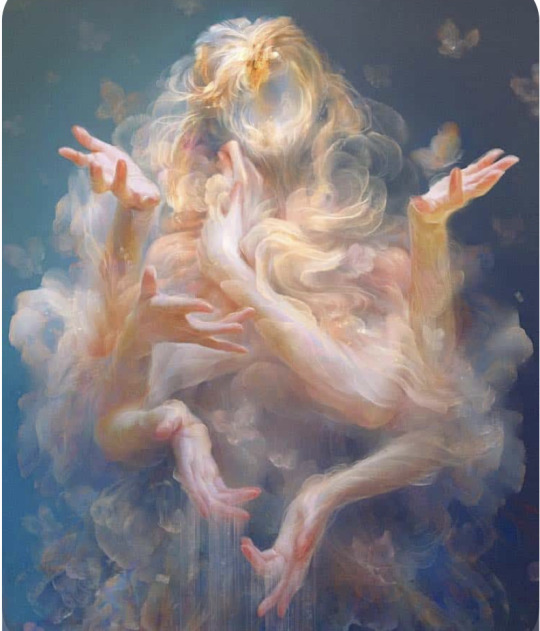
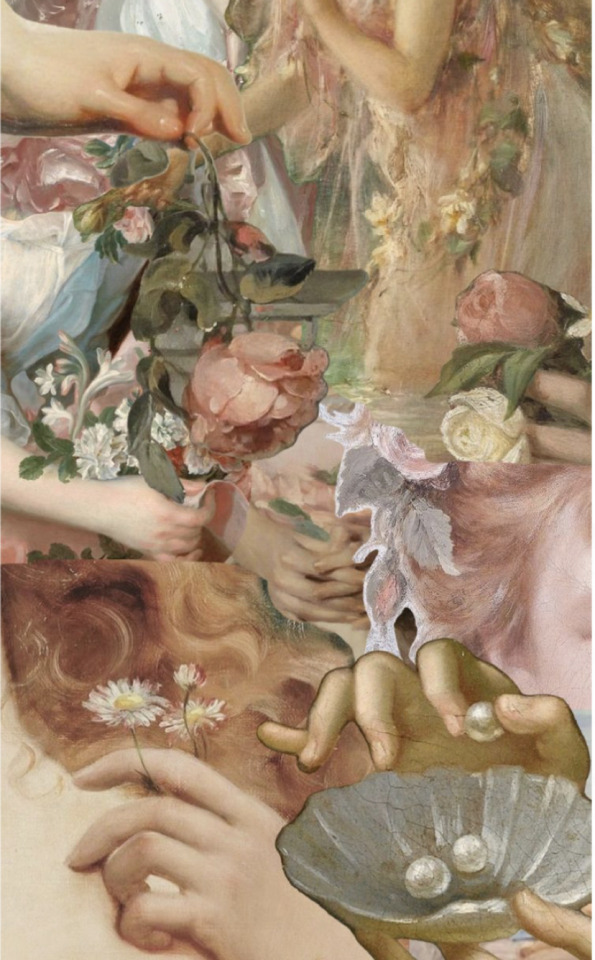

As promised, I’m finally going to talk about one of my favorite places I’ve shifted to! my first ever shift (that I consider at least) was to here and I’ve found myself reminiscing about it and found some old journals about it. I’ll probably go there again soon but until then here was my experience:)! This is going to be very long so if you hate long posts just scroll past this!
Anyways Yall, The city was abuzz with activity, but the most impressive feature was the magnificent airships soaring above. I witnessed the incredible technology used to control those airships, and it was a sight to behold tbh.
Not only was I able to explore the physical wonders of Republic City, I also felt like I was living in the midst of a conflict. There were always whispers of trouble on the horizon, whether it was the power struggle between benders or the ongoing tension between the United Republic and the Fire Nation colonies. Everywhere I went, I encountered people talking and debating about the latest developments.
When I ventured outside of the city, I had the opportunity to witness and join in some of the great adventures that Team avater had gone on. I saw the Spirit World, (which very much resembles the astral realm in this reality) fought alongside her team against their toughest adversaries, and felt first-hand the strength and courage that each of them possessed.
I felt amazed and enlightened by my time here, Seeing such a harmonious society with so many different cultures living together in peace was eye-opening, and it left me with a newfound appreciation for humanity. The Avatar has a lot to teach us all.
One of the most exciting things I was ready to see was to explore the cities. Republic City is a remarkable place, full of possibility, opportunity, and sometimes danger.
the first things you’ll notice as you explore the metropolis is its diverse population of people from all nations, each with their own vibrant culture that contributes to the city’s ever-changing character. From Air Nomads to Earth Kingdom citizens, to Water Tribesmen, the city has something for everyone.
The city itself has been built on the pillars of modernity and traditionalism alike. As the cultural, economic and political hub of the United Republic of Nations, Republic City is bustling with activity. From the bustling Business District to the vibrant Pro-bending Arena, there’s something to do here for everyone.
If you’re looking for adventure, there’s really no better place than Republic City. its a host of powerful and mystical benders, brave police force aka The Metalbenders, and an active underworld made up of some of the most powerful crime lords in the world, there’s never a dull moment here.
And of course, no visit to Republic City would be complete without an exploration of its public places and parks. Take a stroll through lovely Centennial Park, or view the majestic statues of the city’s founding members in Chikara Plaza.
But above all else, Republic City is a living, breathing organism. Its unique mix of technology and tradition creates a fascinating environment that no other city can replicate. Explore its culture, people, and places. You wont be disappointed.
When I briefly visitied Ba sing se i was immediately taken aback by the sheer size of this city. Everywhere I looked, there was something new to discover. I felt like I could actually hear the city breathing alive and growing with every passing moment.
As I kept exploring, I was constantly amazed at the level of detail put into the city’s design. Everywhere you look, there’s something unique to explore – from the enormous street markets where you can shop for precious artifacts, to the magnificent gardens that are tucked away in the alleyways.
The most incredible thing about Ba Sing Se is its interconnectivity. Every part of the city comes together in a way that’s truly breathtaking. You can explore this amazing city via its intricate system of waterways, which are connected to each other by ancient bridges and tunnels.
But the best part about Ba Sing Se is the people that call it home. This city is filled with some of the friendliest and kindest people I’ve ever had the pleasure of meeting. They are all so welcoming and eager to share their culture and knowledge with anyone who’s willing to listen.
Exploring Ba Sing Se was truly a unique experience for me. It opened my eyes to different cultures and ways of life that I’d never encountered before. It has since become one of my favorite cities in The Legend of Korra, and I look forward to visiting it again someday soon.
But The most fun part was being apart of team avatar.
Being part of Team Avatar is not only about fighting for what is right, it’s also about making connections with others. We have many wonderful members who become close friends and confidants, providing support and guidance to one another.
The Avatar is the leader of our team (duh), Korra obviously. She is ultimately responsible for guiding us, teaching us, and keeping us all on the same page. Korra is brave and powerful, but also compassionate and humble. You can always count on her to listen to your concerns and provide thoughtful advice.
The rest of the team consists of myself,mako, bolin and asami. We are all loyal and devoted to Korra and Team Avatar. Everyone has their own talents and specialties, ranging from combat skills to earthbending. While we all have different strengths, we learn from each other, providing encouragement and support along the way.
Being part of Team Avatar is more than just fighting evil in the world; it’s also about being part of something bigger than yourself. We rely on each other to maintain a balance of peace and justice, while also learning and growing together. We may have different backgrounds, but we all share a common goal - to make the world a better place. This was my first real shift and experiencing this family like friendship was the best thing I could have asked for.
Also Harmonic convergence was insane 😭😭
For those who don’t know, Harmonic Convergence is an important event. It occurs every 10,000 years when the planets and stars align, allowing for a transfer of spiritual energy between the physical and spiritual realms. On this day, many people can receive spiritual gifts like airbending (I did! Before this event I was a non bender)
The process of getting airbending during Harmonic Convergence was both exciting and nerve-wracking. Tenzen told me I had to spend weeks mastering the basics of airbending, like how to move my hands and how to direct my breath. As well as spend days meditating and connecting with the spiritual realm.As of now I have no intentions doing this as I like my job and life, but I have always had an interest in the spiritual realm so maybe this journey tenzen wants me to take will help me with that.
I got mine a couple of days after harmonic convergence during my time at work with mako. I work with the police force under beifong and mako and I have always had a competitive nature. I was a non bender before this historic event, but I knew how to chi block which is essential. Now I have bending so I expect the competitive nature to increase and I can’t wait to utilize my new bending with chi blocking lol
The experience of getting my airbending during Harmonic Convergence was incredibly special and unique. I was able to witness a spiritual event as well as gain a new power and skill. If you ever visit, and end up gaining airbending during Harmonic Convergence, it’s important to be patient, practice mindful meditation, and create a sacred atmosphere on the day of convergence.
And as I mentioned before I am a chi blocker!
Chi blocking is actual super complicated and you need a lot of dedication & Precision to master it.
First, it’s important to understand where your attacker’s pressure points are located. The pressure points are located in the body’s meridians, which are the pathways used by the body to transfer energy. Here are a few of the main pressure points to keep in mind: the jugular vein, carotid artery, clavicle, forearm, and shin.
Once you’ve identified the pressure points, you can start working on your technique. The key to chi blocking is speed and precision. You want to be able to quickly and precisely target the pressure points to effectively stop your attacker.
To begin, you’ll need to know how to properly block the pressure points. To do this, use your palm, fingers, or knuckles to press firmly into the pressure point on your attacker’s body. Make sure you are using a flat strike in order to fully block the energy in your attacker’s body.
You can also use strikes or kicks to interrupt an attack. When striking an attacker, aim for vulnerable body parts such as their wrists, elbows, or throat. You want to avoid targeting sensitive areas like the eyes or groin.
In addition to blocking and striking, you can also use joint manipulation techniques to disrupt an attack. By using leverage and pressure, you can force your attacker’s limbs out of their fighting stance and disable their ability to fight back. chi blocking is all about speed and precision. I had to Train regularly as a child, use proper technique, and be aware of my environment so that i could safely and effectively defend yourself against attackers.
I also want to reminisce about Korra and asami 🥹
Being friends with Korra and Asami has been an incredible experience. Not only have we grown close over the years, but we’ve also shared some great life lessons along the way. I didn’t grow up with a lot of women because I spent a lot of time with my father and as he worked in politics i was always surrounded by old men, so their friendship means a lot to me.
Korra is the kind of friend who always has your back. She’s strong, brave and fiercely loyal; a true friend no matter what. Life’s lessons have been tough at times, but she’s been a support system through it all. Korra knows just what to say to motivate and inspire.
Asami is another great friend. She’s intelligent and driven, yet practical and empathetic. Together, we’ve worked through complex problems and made some difficult decisions. Asami has the unique ability to see the whole picture and to think objectively.
No matter what we’re dealing with, our friendship has been a cornerstone of our lives. We may not always agree with each other, but we’ve come to trust each other even with different opinions. We laugh together and are open with each other.
Of course, we’ve also gone through some tough times. We’ve had disagreements, said hurtful things to each other, but we’ve never failed to apologize and learn from our mistakes.
Korra and Asami are two of the strongest women I know. I’m proud to call them friends, and I wouldn’t change our friendship for the world. Life isn’t perfect, but it definitely is better with them in it.
Ok next, No one ever talks about the mundane stuff of their shifts but the religion aspect fascinated me about this reality.
there are several different religions, but some may stand out more than others. Regardless it’s nothing like current day religions in this reality. The primary religion is the cult of bending, which is mostly centered around reverence for the four main elements (fire, earth, air, and water). This religion is followed by most people including myself even when I was a non bender.
The second major religion is the spiritual order of the “White Lotus,” a secret society that is dedicated to preserving and passing on wisdom about the Avatar. It has members such as Iroh and Aang having significant roles. This is incorporated into the religion I follow as well
Thirdly, there is a mysterious element known as “energybending,” which is used by some of the larger spiritual beings in the series, such as Raava and Vaatu. This energybending allows one to transfer energy from one person to another and even manipulate matter in ways that bending cannot do. This power is seen as a sacred practice and only those truly enlightened can use it.
Finally, there are the various local religions that I have heard of but no one really practices on a global scales. Korra and I met a group of nomads who practiced a religion based on ancestor worship. There are also several mentions of various sects of Buddhism, as well as indigenous spiritual beliefs.
Overall, There are many different beliefs and traditions present throughout which add to the out societies diversity. As I continue to explore this universe, I expect to learn more about these faith systems and how they affect the people I am surrounded by.
No one really ever talks about this when they shift either,but I will be telling you guys my favorite dishes and general popular dishes as well because all i think about is food ;p
For those who want a taste of Republic City, a common food is tarragon glazed beef buns. This dish consists of beef strips cooked in a tarragon infused glaze, served in a steamed bun with various condiments. The variety and texture make this dish a favorite in my friend group.
Another popular dish is hot tofu salad. This traditional salad consists of diced tofu and vegetables, often served cold alongside various sauces and herbs. It makes for a filling and flavorful meal with a hint of tanginess.
If you’re looking for something spicy you will love Republic City’s version of fiery noodles. This dish contains a variety of vegetables, noodles, beef, and chili peppers served with a sesame or peanut sauce. The mix of textures and flavors makes this dish a great choice for when you’re looking for something flavorful and exciting.
No matter what type of food you prefer my city has something for everyone to enjoy. Whether you like sea creatures wrapped in seaweed or fiery noodle dishes, you can find all kinds of delicious dishes in Republic City. Whether you enjoy cooking them yourself or picking them up from a local cart, the options are endless lmfao.
Here are some of my fav restaurants:
First, let’s start with the classic Ba Sing Se Republic City’s oldest and most traditional restaurant. Here, you’ll find a variety of bao dishes, like pork-filled buns, vegetable dumplings and Tianjin Rice Porridge. The favored accompaniment to many of their dishes is their legendary tea-smoked duck.
The jianbing cart downtown is also worth a visit. It’s a one-stop spot for all your street food cravings. Their jianbing pancakes are hot and crispy, and loaded with egg, shallots and pickled veggies. Make sure to grab an iced tea after your meal for a sweet finish.
If you’re looking for something more adventurous, you can go to Republic City Fusion Cuisine. This restaurant has a unique spin on traditional dishes from around the world. Enjoy succulent pork-stuffed peppers from the Andes, Thai-style curries or Indian kebabs.
And of course No meal in Republic City is complete without dessert, and who better to satisfy your craving than Iroh’s? Iroh’s specializes in bubble tea of every flavor, chai tea lattes, and their signature treat, smooth yogurt topped with sweet honey glaze. It’s my favorite place to go for dates and group meet ups because of the ambiance and it’s history of its creation. Iroh is a greatly respected figure in history.
Now for the Random stuff
Some of my favorite things I did outside of hanging out with team avatar and work included: exploring the beauty of Republic City’s architecture. I love walking by the breathtaking skyscrapers and the majestic Tree of Time that stands proud in the center of the city. Not to forget taking strolls along the canal, and admiring the Spirit Wilds’ colorful gardens. Also watching a tournament at Pro-bending arena I think this is an obvious no brainer but it is the equivalent to this world’s sports! attending one of their many festivals was super cool. They have a bunch, From the music festival to the spirit festival, and these events offer a great chance to meet new people, discover new sounds and tastes, and learn more about the history behind Republic City. Lastly going over to Air Temple Island and soaring through the sky on an air scooter with Korra and tenzens kid. This is a great way to admire the city from above.
As a police officer, I have had the privilege of working directly with Chief Beifong to help keep Republic City safe.
I can honestly say that Chief Beifong is one of the best leaders I have ever had the pleasure of knowing in any reality. She is a focused, intelligent, and strong leader with an unwavering commitment to justice and protecting the citizens of Republic City.
Chief Beifong has always been incredibly supportive of the police officers who work for her. She’s always available to give encouragement, advice, or direction when needed. The chief encourages us to stay on top of suspicious activity and to be proactive in safeguarding the citizens of Republic City.
She also heavily values accountability and ethics for her police force. She believes strongly in the importance of doing the right thing and follows through with disciplinary actions if her officers get out of line.
Being a cop under Chief Beifong has taught me the valuable skills of dealing with difficult situations and the importance of keeping a cool head in tense situations. It has also instilled me with a strong sense of responsibility and ethical decision making.
Overall, being a cop under Chief Beifong has been an incredibly rewarding experience. She is an incredible leader and an amazing role model for her officers. We are all grateful to have her as our captain, and I know that I feel much more confident in my duties knowing that she is leading the Republic City Police Department.
One of the most impressive pieces of technology used in Legend of Korra is the power armor of Zaofu. This robotic suit was created by Suyin Beifong to protect her family from danger. It’s equipped with a multitude of weapons including a large drill and repelling cables. The power armor can also sense the presence of benders nearby, allowing Suyin to know when danger is coming.
Another fascinating piece of tech featured in the show is the radio controlled cars. These vehicles were built by Varrick and are capable of interacting with and carrying out complex commands. They’re powerful enough to outrun Korra’s airbending and can be used to transport people across long distances. By using a remote control, drivers can pilot these vehicles to strategic locations with ease.
In addition to vehicles and mechanized suits, it also featured a unique form of communication through holograms. This technology was used by Tenzin to contact other Airbenders and relay important updates. There was also a psychological application of this tech as Korra was able to gain insight into the Avatar state by taking part in a virtual Reality experience.
Lastly the interactive control panels used by Kya and Bumi. These panels gave access to a wide range of knowledge, including the locations of benders and the status of the world’s vital functions. The panels could also be used to trigger alarm systems, contact other benders, and carry out research.
Overall, technology played an important role in the Legend of Korra universe and complemented the power of bending in unique ways.
Bisons bro, I can’t believe they’re not in this reality 💔They’re one of the biggest aspects I miss about my legend of Korra homes they’re quite friendly and intelligent as you would assume. They have a strong bond with their airbenders, so they appreciate being handled with patience and gentleness.
When you interact with them, they seem to understand the feelings of those around them even those they are not quite familiar with. This makes them quite easy to get along with.The best way to describe the feeling of interacting with a sky bison is that it makes you feel calm and peaceful. They’re so big and gentle that you can really get lost in the moment and enjoy their majestic presence.They also are way bigger than I imagined. As for their size, sky bisons can reach up to 25 feet in length and have a wingspan between 12 and 20 feet. They’re impressive to look at, both from far away and up close. Almost seeming to almost take up the entire sky.
Now, Astral projection
after this shift, a week later I astral projected which is Insane considering it took about 1.5 years for me to initially shift. I’m combining these stories because the spiritual world and the astral realm are the same thing which is why I think it was so easy to do.
I got into astral projection after I started reading about other peoples out of body experiences..like meeting spirits, traveling the world in seconds, some even meeting what they presumed to be god, and got fascinated once again as it did not sound like the shifting I had been doing. I was so interested and did a little research to find out that once again this was astral projection and I decided this was going to be me.
Contrary to everything I was taught, I didn’t do much research like I did with shifting. My belief was if I shifted, then there’s no reason I should not be able to astral project tbh. it seemed easier on paper. I watched a video on how to do it, and it seemed simple enough. After three days of trying one day, while doing my method I felt myself rolling out of my body and when I “awoke” I saw my real body.
It was so amazing, I could not feel myself but i was aware of my own presence, and was on my floor even though I resembled what you would think is a ghost, at least matter wise. I didn’t really know where to go or what to do. I wasn’t using it to shift, and I didn’t have any goals or intentions but I was not going to waste a good spiritual moment. I told my subconscious to take me where I most need to go. Just Like that I started moving, but I was not moving? More like….My environment was changing at the same speed of light, but I could not feel it. Anyways I wasn’t in my room anymore.
I ended up in an abandoned house. I was just exploring it when I saw, what I didn’t know at the time were probably spirits. (Y’all do not be like me, do your research before you practice any out of body experience.) anyways, they looked liked live dolls, but they were asleep. I knew better than to mess with something I didn’t know of, so I let my curiosity die and I went outside. When I went out there, the sky was colors that did not exist on this earth, or at least we can’t see them. The weather was something I had never experienced and I felt the most euphoria and tranquillity that I doubt I could ever feel on this human plain of existence. I wanted to cry of happiness and just stay there forever. But moments later I saw a beautiful angel, and for some reason I knew her name before asking. It was Helen
After confirming her identity, it almost feels wrong to refer to it as a her. This was a godly being lol. I digress, but I asked her so many questions. Why I had to go through everything I did, what is shifting, how is it possible, did she hear my pain when I was asking for help from anyone, how is she real, who is god. I asked everything guys, and all the answers I received aligned with my beliefs. My final question was is she apart of my subconscious, because unless I’m the second coming of god how could a normal ass girl have the correct answer to everything unknown to man. She told me that was up to my interpretation and just smiled at me. I already knew the answers because, what we assume is true. If you were to ask the same questions to a godly being who knows all, we would all get different answers. Everything I had learned from shifting, all the questions I had came to the final conclusion and my journey was over from that point forward. I asked her to take me home as I was excited to wake up and tell my friends what I had learned. That is what happened and when I saw my body, I went back inside and I simply opened my eyes back to my room where I had fallen asleep
Basically,When I woke up from that moment my journey was over and I decided it was time to experience as much as I can. Everything changed. I had so many questions as to what to do to continue to shift forever.. how it works etc.. just so much questions and it’s like the following days everything just came to my knowledge at once.
Like I said before, I shifted to legend of Korra, and the spiritual essence in that reality was insane. Not to mention the astral world is quite literally the humans world version of the spiritual world in that reality. I do not know if that had to do with my success or if it was a coincidence (really doubt it) but astral projecting right after my first shifting experience was one of the best things that could happen to me. There’s not much to say but that journey was the peak culminating point of my Experience and I think about it often !
After that’s I wanted to be more apart of the astral projection community but my god they are such haters. They think shifters are mentally ill, and treat us worse than the lucid dreaming community. It doesn’t even make sense considering opening an awareness to a parallel universe sounds way more believable than leaving your body and traveling as a soul, but….whatever I suppose. They’re both very real and I have noticed anytime time a new community emerged it’s labeled as false. I mean decades ago even lucid dreaming was mere pseudoscience and people just thought lucid dreamers were insane. Astral projection followed and then lucid dreamers treated them the same. Now they do the same to shifters. As someone who has experienced all three phenomenons it’s insane how limiting they all can be. It doesn’t matter though. Anyone hating on your desires and are content with their limitations have nothing to do with your accomplishment and goals. Misery loves company so don’t falter to the hatred of others. Even here in my asks, void state anons and manifesters tell me I’m delusional for being a shifter and I have to cackle bc baby… to others you’re in the same boat 🫶 but it’s whatever, live your life and seriously don’t let anyone limit you. That universe is yours.
238 notes
·
View notes
Text
Anthropologist Zelia Nuttall transformed the way we think of ancient Mesoamerica
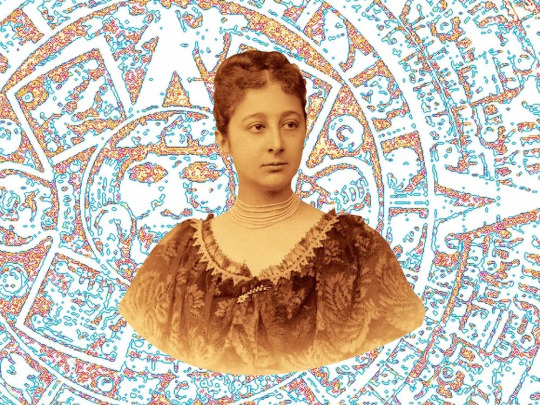
An illustration of the Aztec calendar stone surrounds a young portrait of anthropologist Zelia Nuttall. “Mrs. Nuttall’s investigations of the Mexican calendar appear to furnish for the first time a satisfactory key,” wrote one leading scholar.Peabody Museum of Archaeology and Ethnology, Harvard University
By Merilee Grindle
Author, In the Shadow of Quetzalcoatl: Zelia Nuttall and the Search for Mexico’s Ancient Civilizations
On a bright day early in 1885, Zelia Nuttall was strolling around the ancient ruins of Teotihuacán, the enormous ceremonial site north of Mexico City. Not yet 30, Zelia had a deep interest in the history of Mexico, and now, with her marriage in ruins and her future uncertain, she was on a trip with her mother, Magdalena; her brother George; and her 3-year-old daughter, Nadine, to distract her from her worries.
The site, which covered eight square miles, had once been home to the predecessors of the Aztecs. It included about 2,000 dwellings along with temples, plazas and pyramids where they charted the stars and made offerings to the sun and moon. As Zelia admired the impressive buildings, some shrouded in dirt and vegetation, she reached down and collected a few pieces of pottery from the dusty soil. They were plentiful and easy to find with a few brushes of her hand.
The moment she picked up those artifacts would prove to be pivotal in the life and long career of this trailblazing anthropologist. Over the next 50 years, Zelia’s careful study of artifacts would challenge the way people thought of Mesoamerican history. She was the first to decode the Aztec calendar and identify the purposes of ancient adornments and weapons. She untangled the organization of commercial networks and transcribed ancient songs. She found clues about the ancient Americas all over the world: Once, deep in the stacks of the British Museum, she found an Indigenous pictorial history that predated the Spanish conquest; skilled at interpreting Aztec drawings and symbols, and having taught herself Nahuatl, the language of the Aztecs and their predecessors, she was the first to transcribe and translate this and other ancient manuscripts.
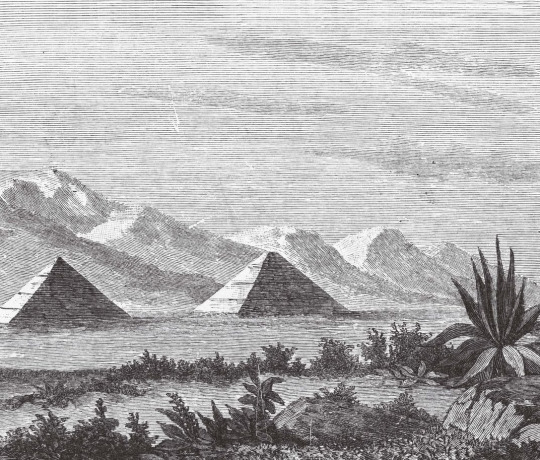
A 19th-century engraving of the pyramids of Teotihuacan. The Pyramid of the Sun was restored in 1910, on the centennial of the Mexican War of Independence. Bridgeman Images
She also served as a bridge between the United States and Mexico, living in both countries and working with leading national institutions in each. At a time when many scholars spun elaborate and unfounded theories based on 19th-century views of race, Zelia looked at the evidence and made concrete connections based on scientific observations. By the time she died, in 1933, she had published three books and more than 75 articles.
Yet during her lifetime, she was sometimes called an antiquarian, a folklorist or a “lady scientist.” When she died, scholarly journals and some newspapers ran notices and obituaries. After that, she largely passed from the public’s eye.
Today, anthropologists often have specialized expertise. But in the 19th century, anthropology was not yet a discipline with its own paradigms, methods and boundaries. Most of its practitioners were self-taught or served as apprentices to a handful of recognized experts. Many such “amateurs” made important contributions to the field. And many of them were women.
She was born in 1857 to a wealthy family in San Francisco, then a fast-growing city of about 50,000 people. Near the shore, ships mired in mud—many abandoned by crews eager to make their fortunes in the gold fields—served as hostels to a restless, sometimes violent and mostly male population. Other adventurers found uncertain homes in hastily built hotels and rooming houses. But the city was also an exciting international settlement. Ships arrived daily from across the Pacific, Panama and the east via Cape Horn.
Her well-appointed household stood apart from the city’s wilder quarters, but the people who lived there reflected San Francisco’s international character. Her mother, Magdalena Parrott Nuttall, herself the daughter of an American businessman and a Mexican woman, spoke Spanish, and her grandfather, who lived nearby, employed a French lady’s maid; a nursemaid from New York; a chambermaid, laundress, housekeeper, coachman and groom from Ireland; a steward from Switzerland; a cook and additional servants from France; and nine day laborers from China.
When Zelia was 8, her family left San Francisco for Europe. Along with her older brother, Juanito, and her younger siblings Carmelita and George, Zelia and her parents set off for Ireland, her father’s native land. Over the course of 11 years, the Nuttalls made their way to London, Paris, the South of France, Germany, Italy and Switzerland. Throughout that time, Zelia was educated largely by governesses and tutors, with some formal schooling in Dresden and London. But her time overseas shaped her interest in ancient history and expanded her language skills, as she added French, German and Italian to her fluent Spanish. All of this expansion thrilled her mind, but it also made her feel increasingly out of step with the expectations for young women of her age. “My ideas and opinions form themselves I don’t know how, and I sometimes am astonished at the determined ideas I have!” she wrote in a November 1875 letter.
She took refuge in singing and tried to be pleased with the few social events she attended. Photos from the time show Zelia as an attractive young woman with large, dark eyes, arched eyebrows and stylishly arranged hair. Nevertheless, she was unhappy. “I was infinitely disgusted with some of the idiotic specimens of mankind I danced with,” she wrote in an 1876 letter after a party.
The Nuttalls returned to San Francisco in 1876, when she was nearly 20. Two years later, she met a young French anthropologist, Alphonse Pinart, already celebrated in his mid-20s as an explorer and linguist. He had been to Alaska, Arizona, Canada, Maine, Russia and the South Sea Islands. Pinart may have led the family to understand that he was wealthy. In fact, he was almost penniless, having already spent his significant inheritance.
They were married at the Nuttall home on May 10, 1880. During the next year and a half, the couple traveled to Paris, Madrid, Barcelona, Puerto Rico, Cuba, the Dominican Republic and Mexico. Pinart introduced Zelia to a burgeoning academic literature in ethnology and archaeology, and she began to understand the theories of linguistics. She found 16th-century Spanish hardly a challenge as she consulted annotated codices—pictorial documents that traced pre-Columbian genealogies and conquests in Mesoamerica. While Pinart dashed from project to project and roamed widely among countries, tribes and languages, Zelia began to demonstrate an intellectual style that was more focused and precise.
Despite the excitement of discovery, something began to go wrong in the marriage. Hints of Zelia’s distress can be found in her effusive letters home. There was, for example, the shipboard admission that her husband was less attentive than she had anticipated. She noted that he was “so quiet and undemonstrative” that it was hard to imagine they were newly married. Some fellow passengers thought they were brother and sister—an odd assumption to make, even in Victorian times, about newlyweds.
By contrast, Zelia is nowhere to be found in Pinart’s surviving correspondence. On April 6, 1881, she gave birth to a daughter, Roberta, who lived only 11 days. To add to this melancholy time, her beloved father died in May, leaving her doubly devastated. A letter Pinart wrote to a friend just a few months later from Cuba appeared on stationery with a black border, signifying mourning, but he made no reference to his wife, her father or their child.
Zelia found solace in learning about her heritage when she and Pinart traveled to Mexico in 1881. She was eager to see her mother’s homeland and to hone her understanding of its pre-Columbian cultures. While Pinart carried out his own research, she began to learn Nahuatl, and she toured villages where dialects of the language were still spoken and ruins where the marks of the past could still be found.
The couple returned to San Francisco on December 6, 1881. By then, Zelia was pregnant again. In late January, Pinart set out to spend several months in Guatemala, Nicaragua and Panama, while Zelia awaited the birth of her second child, Nadine, at her mother’s house.
What finally drove Zelia to sue for divorce, on the grounds of cruelty and neglect, remains elusive. She may have felt that Pinart had married her for access to her family’s fortune. Many years later, she angrily informed Nadine that Pinart had spent the $9,000 she had inherited from her father as well as her marriage settlement. When the money was gone, and when her family was firm that he shouldn’t expect any more, he abandoned his wife and child. Once Zelia demanded a separation, he did not contest it, though obtaining the divorce was a long process that started soon after the couple’s return from their travels and didn’t conclude until 1888.
In later life, Nadine Nuttall Pinart would reflect on how much it had cost her to grow up without a father. “From the time before I can remember, he was taboo to me,” she wrote in a 1961 letter to Ross Parmenter, a New York Times editor who wrote numerous books about Mexico and developed a fascination with Zelia Nuttall. “I was frightened by the violent scoldings I got for mentioning his name. Later, I compromised with myself and when asked about him quietly said, ‘I never knew him!’ I realized that people thought he was dead and were sorry for me and said no more. In those days it was a disgrace to have a divorced mother.”
If the period between 1881 and 1888, when Zelia finalized her divorce, was fraught with tension and heartache, this was also when she set about redefining herself as a woman with a vocation. She spent five months in Mexico with her mother, her daughter and her brother between December 1884 and April 1885, visiting Cuernavaca, Mexico City and Toluca, and exploring archaeological ruins. It was during this time that Zelia made her fateful winter visit to Teotihuacan and acquired her first artifacts.
The pieces of pottery she picked up that day were small terra-cotta heads. They were abundant in the area among the pyramids. At the time, the site was still being used as farmland, and the artifacts came to the surface during ploughing. The heads themselves were an inch or two long, with flat backs and a neck attached. Scholars before Zelia—Americans, Europeans and Mexicans—had mused creatively about such relics, describing differences in their facial features and the variety of headdresses they had sported. Drawing on 19th-century fascination with the topic of race, the French archaeologist Désiré Charnay became convinced that he could see in them African, Chinese and Greek facial features. Charnay mused: Had their creators migrated from Africa, Asia or Europe? And if racial identity was a marker of human development, as many believed at the time, what might this curious mixture of features reveal about civilizations in the Americas?
This kind of thinking was typical. Mistaken ideas about Darwinism led many Western scholars to believe that civilizations evolved along a linear, hierarchical path, from primitive villages to ancient kingdoms to modern industrial and urban societies. Not surprisingly, they used this to legitimize beliefs about the superiority of the white race.
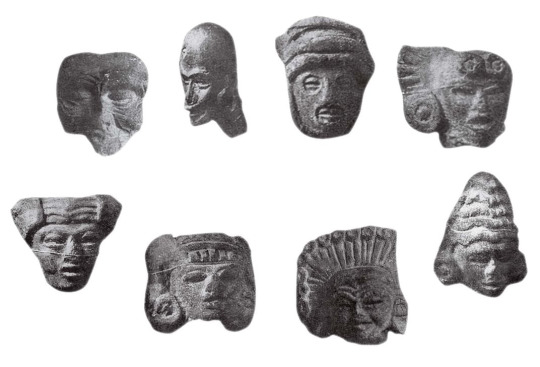
Zelia Nuttall divided her collection of terra-cotta heads into three classes. The first included rudimentary efforts to represent a human face (as seen above, far left). The second class (including the bald second head from the left above) had holes for attaching earrings and other ornaments. The third category included the rest of the heads pictured here, sporting what Zelia called “a confusing variety of peculiar and not ungraceful headdresses.” Public Domain
Zelia generally accepted her era’s assumptions about race and class, and she was comfortable with her elite status and its privileges. Yet in her research, she did not categorize civilizations as primitive, savage or barbaric, as other scholars did, nor did she indulge in racial theories of cultural development. Instead, she sought to sweep aside this kind of speculation and replace it with observation and reason.
The more Zelia examined her terra-cotta heads, the more she realized she needed guidance from someone who had more experience in the study of antiquity than she had. At the time, there were no departments of anthropology in colleges or universities, no degrees to be earned, no clear routes to building a career. To pursue her burgeoning interest in the ancient civilizations of Mexico, and to decipher the meaning of an assortment of terra-cotta heads, she contacted Frederic Ward Putnam, the curator of Harvard’s Peabody Museum of Archaeology & Ethnology and a leading expert on Mesoamerica. He agreed to meet her in the fall of 1885. The meeting was all she hoped for: Putnam warmed to her work and encouraged her to follow her intuitive grasp of how to observe and interpret evidence.
Putnam’s regard for women’s intellectual capacities was clear. He was one of a small number of Harvard researchers who gave lectures at “the Annex,” an institution established for women who had passed the college’s admissions test but were not allowed to attend classes or earn a degree. (The Harvard Annex eventually became Radcliffe College.) He hired a resourceful administrative staff of women and encouraged them to play a role in managing the museum. He also had a “correspondence school,” which he conducted through a widespread exchange of letters. As he once wrote, “Several of my best students are women, who have become widely known by their thorough and important works and publications; and this I consider as high an honor as could be accorded to me.”
Within months of their first encounter, in late 1885, Putnam asked Zelia to become a special assistant in Mexican archaeology for the Peabody. Less than a year later, in the annual report of the Peabody Museum, he wrote about her appointment in glowing terms: “Familiar with the Nahuatl language … and with an exceptional talent for linguistics and archaeology, as well as being thoroughly informed in all the early native and Spanish writings relating to Mexico and its people, Mrs. Nuttall enters the study with a preparation as remarkable as it is exceptional.”
With guidance from Putnam, Zelia wrote an investigation of the terra-cotta heads, her first published scientific report, which appeared in the spring 1886 issue of the American Journal of Archaeology. “At the first glance,” she wrote, “the multitude and variety of these heads are confusing; but after prolonged observation, they seem to naturally distribute themselves into three large and well-defined Classes.”
Each class, she theorized, had been created at a different time and represented a different stage in the culture. The first class contained “primary and crude attempts at the representation of a human face.” The second class included the first efforts at artistry. Her inspection revealed “holes, notches and lines,” suggesting ways in which tiny headdresses, feathers or beads could have been attached to the heads, and noted traces of several colors of paint and different kinds of clay.
The third class was the most important, Zelia argued, because of the quality of the molding and carving. This class had “modifications of feature sufficient to give every specimen an individuality of its own,” she wrote. “The faces are invariably in repose, in some the eyes are closed … faces young and smooth, others very elongated, some with sunken cheeks, others with wrinkles.”
By comparing these terra-cotta heads with ancient pictographs and writings, she showed that some of the heads represented children while others depicted young men, warriors or elders. Others showed the distinct hairstyles described in the writings of Bernardino de Sahagún, a 16th-century Franciscan friar who spent 50 years studying the Aztec culture, language and history. “The noblewomen used to wear their hair hanging to the waist, or to the shoulders only. Others wore it long over the temples and ears only,” Sahagún had written. “Others entwined their hair with black cotton-thread and wore these twists about the head, forming two little horns above the forehead. Others have longer hair and cut its ends equally, as an embellishment, so that, when it is twisted and tied up, it looked as though it were all of the same length; and other women have their whole heads shorn or clipped.”
These concrete observations allowed Zelia to challenge popular ideas about the supposed African, Asian, European or Egyptian origins of the “races” in the Americas. For example, by studying the ornamentation the heads displayed, she was able to identify the person or god each artifact represented and interpret its ritual or symbolic purpose. One clearly corresponded with Tlaloc, the pan-Mesoamerican god of rain, who had been shown in the pictographs with a curved band above the mouth and circles around the eyes. Another head, molded with a turban-like cap, corresponded with the goddess Centeotl; Zelia speculated that the clay turbans once had real feathers attached. She also noted the significance of various poses. “In the picture-writings, closed eyes invariably convey the idea of death,” she wrote.
The article revealed how Zelia intended to be seen as a scholar. First, she made it clear that she had read what others had written. Then she revealed that she would go beyond existing speculation to answer questions that had puzzled others; hers was to be original and important work.
In 1892, Zelia presented a paper in Spain about the Aztec calendar stone. Buried during the destruction of the Aztec Empire, the calendar stone had been unearthed in December 1790, when repairs were being made to the Zócalo, Mexico City’s central plaza. The sculpted stone, some 12 feet in diameter and weighing 25 tons, became a popular attraction exhibited in the Mexico City Cathedral, steps from where it had been found. Antonio de León y Gama, a Mexican astronomer, mathematician and archaeologist, had written about its discovery and praised the intelligence of the Aztecs who had created it. Alexander von Humboldt, who saw the stone when he visited Mexico in 1803-1804, included a drawing in his Views of the Cordilleras and Monuments of the Indigenous Peoples of the Americas, published in 1810, and encouraged Mexican intellectuals to study the meaning of its concentric circles and numerous glyphs. Many others took on its puzzles in the years that followed.
At the time of Zelia’s presentation, the Mexican upper classes were carefully crafting a new national image—a story that would allow Mexico to take its place among the modern nations of the world. The Aztecs, Maya, Olmecs, Toltecs, Zapotecs and other cultures had left their imprints throughout the country in magnificent temples, enigmatic statues, gold jewelry, jade figurines and painted murals. This history was reclaimed as a national heritage every bit as glorious as those of Greece and Rome. A statue of Cuauhtémoc, the Aztec king who resisted Cortés, took its place on Mexico City’s elegant Paseo de la Reforma in 1887. The calendar stone had been installed in a place of honor in the National Museum in 1885. But little was known about the actual customs and beliefs of those ancient people.
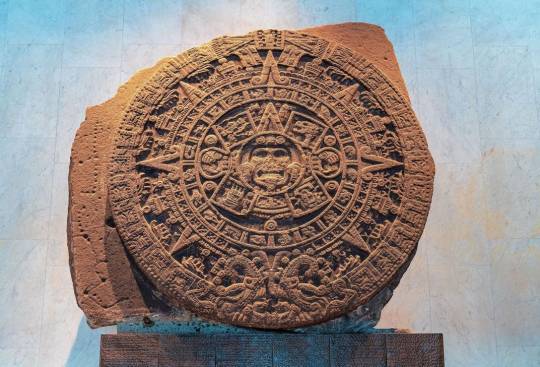
The Aztec calendar stone, a central focus of Zelia’s research, has been on display at Mexico City’s National Museum of Anthropology since 1885. Alamy
With her extraordinary knowledge of surviving codices, Zelia offered a novel “reading” of the giant calendar stone that had stumped others and provided new insights into the annual and seasonal cycles of daily life in ancient Mexico, illuminating the cosmology, agriculture and trade patterns of the Aztecs. She presented another version of the paper at the World’s Columbian Exposition in Chicago in 1893.
Zelia returned to Mexico City in February 1902, and after a personal audience with Mexican President José de la Cruz Porfirio Díaz, arranged by the U.S. ambassador, she embarked on a spree of travel to archaeological sites she had long wanted to visit. In May, she and 20-year-old Nadine joined friends at the Oaxacan ruins at Mitla, a religious center, where the “place of the dead” harbored both Mixtec and Zapotec art and architecture. On this dry, high plain ringed by mountains, Zelia strolled across vast stone patios, inspected the elaborate geometric friezes that lined and decorated them, explored temples and imagined a sophisticated society of kings, priests, nobles, artisans and farmers.
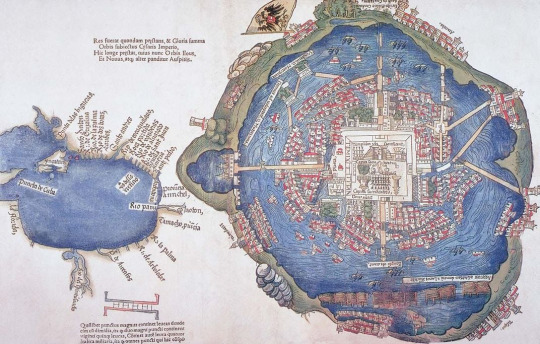
When the Spaniards arrived in Mexico in the 16th century, the Aztec Empire dominated the area. This map of its largest city, Tenochtitlan (now the historic center of Mexico City), was printed in 1524 in Nuremberg, Germany, likely based on a drawing by one of Hernán Cortés’ men. It shows the city’s elaborate network of roads, bridges and canals, complete with aqueducts and bathhouses. The Spaniards executed the last Aztec ruler, Moctezuma II Xocoyotzin, and forced his people to convert to Catholicism. Alamy
Zelia was welcomed into the international community of anthropologists in Mexico. She and Nadine traveled in the Yucatán with the young American anthropologist Alfred Tozzer, where they were beset by frequent rain and terrible roads. Arriving tired and wet in a small town, Tozzer, who would one day chair Harvard’s department of anthropology, was impressed by the women’s resilience. “Imagine the picture,” he wrote to his family on April 8, 1902. “Mrs. Nuttall, never accustomed to roughing it, a woman entertained by the crowned heads of Europe, sitting at a bench with the top part of my pajamas on drinking chocolate and her daughter with a flannel shirt of mine on doing the same.”
After a few months, Zelia and her daughter returned to Mexico City and purchased a mansion they called Casa Alvarado, in the upscale suburb of Coyoacán. The grand house never failed to impress. Frederick Starr, an anthropologist from the University of Chicago, was one of many who found the palace beautiful and restful: “We rode out to Coyoacán where we found Mrs. Nuttall and her daughter really charmingly situated. The color decoration is simple and strong. Nasturtiums are handsomely used in the patio and balcony effects. … While Mrs. Nuttall dressed, Miss Nuttall showed us through the garden, where a real transformation has been effected.”
Living in Mexico energized Zelia. In addition to her affiliation with Harvard, she had funding to travel and collect artifacts for the Department of Anthropology at the University of California. “With me here, in touch with the government and people, I think that American institutions can but profit and that I can do some good in advancing Science in this country,” she confided to Putnam.
Impressed by her knowledge of the country’s past, public officials and foreign visitors came to see her and listened carefully as she led them around her home and garden, explaining the collection she was busy assembling. Her garden, patio and verandas were home to an increasingly large number of stone artifacts, a beautiful carving of the serpent god Quetzalcóatl, revered for his wisdom, among them. She took up “digging” near Casa Alvarado, an activity one guest later recalled fondly. “Every morning after breakfast Mrs. Nuttall would give me a trowel and a bucket. She herself was equipped with a sort of short-handled spade, and we would go out into the surrounding country and ‘dig.’ We mostly found broken pieces of pottery, but she seemed to think some of them were significant, if not valuable. … She was a very handsome woman and very charming. She lived in great style, with many Mexican servants.”
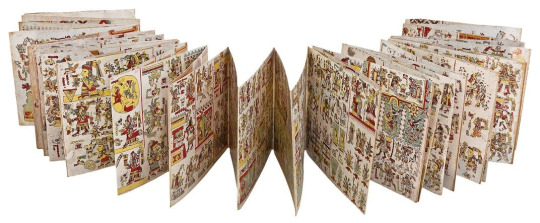
The Codex Borgia, an accordion-folded document of Aztec life, was brought to Europe during the Spanish colonial period. Made of animal skins and stretching 36 feet when unfolded, the codex catalogs different units of time and the deities associated with them. It also includes astrological predictions once used for arranging marriages. Zelia drew on the codex to help her decode the Aztec calendar. Courtesy Ziereis Facsimiles

A section from the Codex Borgia
Zelia continued to travel throughout the country. She found a 14-page codex painted on deerskin, with commentary in Nahuatl, that she believed so valuable that she bought it with her own money, selling some of her possessions to afford it. “Owing to my residence here I must keep it a profound secret that I possess and sent out of the country this Codex,” she wrote to Putnam.
While she was not above smuggling treasures out of Mexico, Zelia also worked in the National Museum, contributing to its displays and archives, and she became an honorary professor of the institution.

Zelia had never owned a home until she bought Casa Alvarado in 1902. In a letter, she described the property as “a beautiful old place with extensive gardens.” Smithsonian Archives
Her Sunday teas at Casa Alvarado were a study in salon orchestration. “She would have 30 or 40 people and she would change the groups she invited,” one visitor recalled. “Sometimes they were all people who knew each other. Or else she would bring people together she wanted to introduce to each other. They weren’t like old-style Mexican parties, with all the women on one side and men on the other. The men and women were mixed together.”
According to an oft-repeated legend, at one of her soirées, she advanced to welcome an eminent guest just as her voluminous Victorian drawers came loose and dropped to her ankles. She calmly stepped out of them and proceeded as if nothing had happened. Zelia was, above all, self-confident.
Zelia Nuttall left Mexico during the early months of 1910 and did not return to her beloved Casa Alvarado for seven years. Throughout that time, Mexico was in the midst of a violent revolution. As many as two million people lost their lives in the ten-year conflict, and the country’s infrastructure was reduced to tatters. Even after the end of the most extensive violence, turmoil erupted sporadically until the late 1920s.
By then, visitors to Casa Alvarado agreed that Zelia was rooted in a bygone era. She was a middle-aged woman with thick glasses who favored shawls, laces and jet beads. Her palace was still filled with stuff only a Victorian could accumulate, but Mexico was telling new stories about itself.
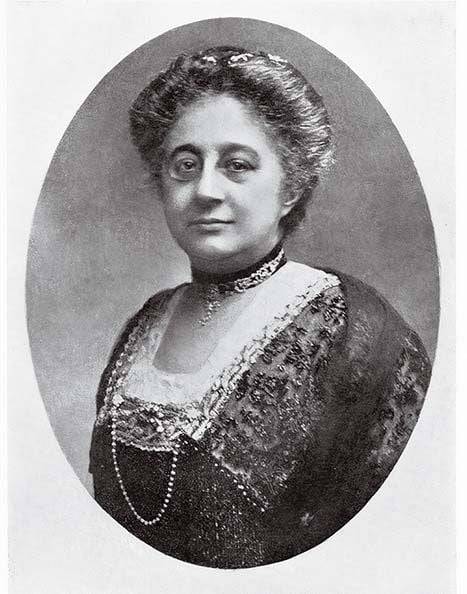
The writer D.H. Lawrence used Zelia as a model for a fictional character—“an elderly woman, rather like a Conquistador herself in her black silk dress and her little black shoulder-shawl.” Antropo Wiki
The elites of the previous generation had asserted that descendants of the Aztec, Maya and other civilizations deteriorated into poverty and abandon. Young artists and intellectuals now rejected this belief. In Diego Rivera’s vast public murals, he showed the people of Mexico being ground into poverty and submission by Spanish conquistadors, a rapacious church, foreign capitalism, the army and cruel politicians. Quetzalcóatl replaced Santa Claus at the National Stadium; Chapultepec Park hosted Mexico Night.
Zelia did not like the revolution and she did not approve of what came after it. She did not celebrate the masses; she believed in hierarchy and a natural order of classes and races. Yet she was determined to be relevant to a new era in Mexico. Casa Alvarado became a meeting place for politicians, journalists, writers and social scientists from Mexico and abroad, many of whom came to witness the possibilities of change in the aftermath of a people’s revolution.
Nevertheless, the stubborn elegance of Casa Alvarado in the 1920s was clear testimony that Zelia was not willing to give up her lifestyle. When the French American painter Jean Charlot was a guest at one of Zelia’s teas, he was aghast at the Mexican servants in white gloves.
When Zelia Nuttall died in 1933, the U.S. consul in Mexico City wrote to Nadine—by then a 51-year-old widow living in Cambridge, England—assuring her that they’d given her mother a tasteful funeral. “Your Mother was very highly thought of here, as evidenced by the floral offerings and the number of her friends who came to the funeral service at the cemetery, it being estimated that about one hundred persons were present.”
By that time, the field of anthropology was dramatically changing, becoming more systematic and organized. Those who entered the field in the 1920s and 1930s built expertise in the classroom and under supervision in the field, passing a variety of tests and milestones determined by academic experts and acquiring a credential as proof of the right to pursue these inquiries. With these rigorous new standards, they asserted their superiority as scholars over those of Zelia’s generation.
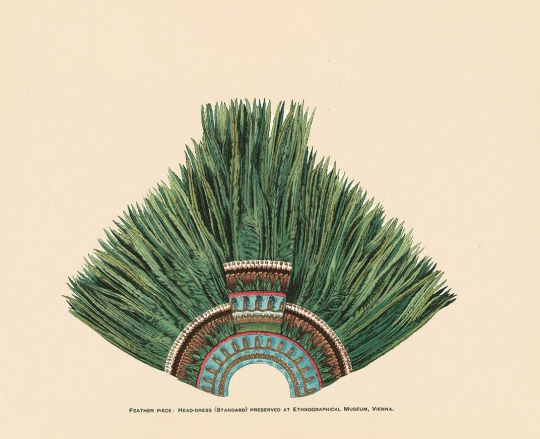
Researchers thought this item at Vienna’s Museum of Ethnology was a “Moorish hat” before Zelia identified it as a Mesoamerican headdress. Alamy
Yet Alfred Tozzer, in his memorial in the journal American Anthropologist, reflected that Zelia “was a remarkable example of 19th-century versatility.” She was wrong in some of her overarching theories. For instance, she fallaciously argued that ancient Phoenician travelers had carried their culture to Mesoamerica. But she was right about many other things. Through her letters, articles and books, we can trace what she got right and what she got wrong as a scholar, and we can follow her as she moved from one research obsession to the next.
Her private life is harder to grasp. Among all the artifacts, there is little about the quips and gossip she exchanged with friends, the piano music she liked to play and sing. We cannot know what was in the boxes of papers in the cellar of Casa Alvarado that were burned in the housecleaning undertaken by its new tenants. We cannot retrieve personal and public documents lost in the San Francisco earthquake in 1906.
What we do know is that she had to make sacrifices, often very personal ones. We can feel her vulnerability, uncertainty, anger and embarrassment in the letters she wrote, as well as her self-assuredness. It required unusual self-discipline to learn so many languages and to gain a mastery of ancient pictographs. Her almost constant travels imperiled her health even while they advanced her vast network of friends, colleagues and patrons. But she continued to work, and that work helped establish the foundation on which many others now build.
A single mother pursuing a career while looking after a family in a man’s world: In some ways, Zelia Nuttall was a very modern woman.
Adapted from In the Shadow of Quetzalcoatl: Zelia Nuttall and the Search for Mexico’s Ancient Civilizations by Merilee Grindle, published by The Belknap Press of Harvard University Press. Copyright © 2023 by Merilee Grindle. Used by permission. All rights reserved.
#Women in history#Women in Anthropology#Zelia Nuttall#The Aztecs#Merilee Grindle#In the Shadow of Quetzalcoatl: Zelia Nuttall and the Search for Mexico's Ancient Civilizations#Books by women#Books about women#teotihuacan#mesoamerica#Nahuatl#Published women#Many of the first anthropologists were women#Alphonse Pinart was just another man who blew through his money#Women's careers flourishing after dumping a parasitic man#Frederic Ward Putnam#Men who encouraged women#The Annex#Lady scientist
45 notes
·
View notes
Text
What To Know:
The movement has a website at 50501movement.carrd.co and is active on Instagram, Reddit, Bluesky, Discord and Signal.
The group is calling for protests at each state capitol building.
The information and start time vary by location.
Information on 50501 Movement's Instagram at the time of writing indicates that meetings will take place at the following times (local) and locations:
Arizona – State Capitol at noon California – State Capitol Building at noon Colorado – State Capitol Building at noon Florida – Tampa City Hall at 3 p.m. Georgia – Centennial Park at 2 p.m. Idaho – State Capitol steps at 11 a.m. Illinois – State Capitol Building at noon Indiana – State Capitol Building at noon Iowa – State Capitol at noon Kansas – State Capitol Building at 4 p.m. Kentucky – State Capitol Building at noon Massachusetts – Statehouse at noon Michigan – State Capitol at noon Minnesota – St. Paul Technical College at noon Mississippi – State Capitol at noon Missouri – State Capitol Building at noon Montana – State Capitol at noon Nebraska – State Capitol at 4 p.m. New Hampshire – Statehouse at noon New Jersey – Statehouse at noon New York – Capitol Building at noon and New York City Hall at 2 p.m. North Carolina – State Capitol Building at noon Ohio – Statehouse at noon and Willard Park at 4 p.m. Oklahoma – State Capitol at noon Oregon – State Capitol Building at noon Pennsylvania – State Capitol Complex at 11 a.m., Williams S. Moorhead Federal Building in Pittsburgh at 11 a.m. and Philadelphia City Hall at noon South Dakota – Downtown Federal Courthouse at 3 p.m. Tennessee – State Capitol at 1:30 p.m. Texas – State Capitol at 11 a.m. and San Jacinto Plaza at 4 p.m. Vermont – State Capitol at noon Virginia – Bell Tower at 12:30 p.m. Washington – Tivoli Fountain North Lawn at 2:30 p.m. Washington, D.C. – Capitol Building at 11 a.m. Wisconsin – State Capitol at 11 a.m. Wyoming – Capitol at 2 p.m.
#2024 presidential race#politics#right wing extremism#constitution#congress#donald trump#corporate greed#supreme court#vote democrat#trump is a threat to democracy#trump is a criminal#trump is an idiot and so are his voters#trump is a felon#trump is a traitor#elongated muskrat#elon musk
3 notes
·
View notes
Text
Fascist Judges: Keep Your Hands Off Medication Abortion!
Saturday, April 8
ATLANTA: 6:00 pm @ CNN , Marietta St. & Centennial Olympic Park Drive
AUSTIN: 5:00 pm Texas Capitol. 6 pm march to Federal Plaza
CHICAGO: 2:00 PM, Federal Plaza, Adams & Dearborn
CLEVELAND: 5:00 pm @ Walgreen’s 11701 Detroit Avenue in Lakewood
D.C. (WASHINGTON DC): 12:00 @ White House Lafayette Square
DETROIT: 1:00 pm Federal Court House, 231 W. Lafayette
HONOLULU: 4:00 pm Federal Building
HOUSTON: 2:00 pm, Walgreen’s Montrose 3317 Montrose
LYNWOOD, WA: 10:00 AM, Walgreen’s 20725 Hwy 99
LOS ANGELES: 5:00 pm Federal Court DTLA, 350 West First Street
MACON, GA: 6:00 pm Rosa parks Square (City Hall)
NYC: 6:00 pm Washington Square Park @Arch
PHILLY: 2:00 pm Rittenhouse Square Park
SEATTLE: 5:00 pm 401 Pine Street @ 4th
70 notes
·
View notes
Text






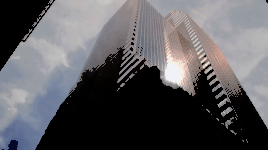

Metropolis was founded in 1634 by Dutch settlers, prospering in trade for its natural coastal harbor. The first settlement was by Dutchman Paul De Vries being called De Vires Village now known as the Old City in Queensland Park. In 1783, the first Metropolitan Bank was opened by P Randall Jeffries, that which still exists today. The mid-1800s saw the Hob's Bay area of the city grow as a merchant center. The large influx of Irish immigrants during this time rose tensions with the second generation citizens of Metropolis, leading to the well-known Hob's Bay Riots. Metropolis would prosper during the Industrial Revolution with the founding of The Steel Works. Today, Metropolis is known as the City of Tomorrow, a nickname adopted from our innovation and our hopes for the future.
WELCOME TO THE CITY OF TOMORROW [ x ] Brought to you by the City of Metropolis Historical Society
NOTABLE PLACES OF INTEREST : Bach Square , Blaze Comics , Centennial Hotel , Daily Planet Building , Daily Star Building , Danko Field , Delaware Bay Pier , Emperor BLDG , Famous Bottle Works , First Metropolis Bank , Glenmorgan Square , Halldorf Hotel , Heroes Park , Hotel Anderson , Javins Park , Lacy's Department Store , LordTech Tower , LordTech Stadium , LuthorCorp Plaza , LuthorCorp Tower , Mason Oil BLDG , Metro Bank , Metropolis Botanical Gardens , Metropolis City Hall , Metropolis History Museum , Metropolis Municipal Pier , Metropolis Museum of Art , Metro Stock Exchange , Metro Palace Theater , Metro Tower , Metropolis University , Prince Tower , Southside Park , Superior County Court , Toth Square , Turley Gallery and Wayne Financial Tower .
5 notes
·
View notes
Note
Oh wise one in the ways of elves, do you have any thoughts or suggestions for how to portray the age/longevity of elves compared to humans? And older elves vs younger elves? I have an ongoing story I'm working on involving several elves, one of which is in his early hundreds, the others being a bit older. I'm struggling with how to convey that this character is older than any of the human characters, but still pretty young and inexperienced compared to the other elves. It's ok if you don't, don't feel like you have to answer.
Ah! Well, I think the best place to start there is to consider what living and expecting to live a very long time would do to a person. You know how people in real life often gain a keener sense of what actually matters as they grow older? Imagine that but magnified several times over for old elves. I think old elves, like we're talking 550+, do not give a fuck. Nothing fazes them. They've seen it all. You could run naked across a plaza screaming "THE CABBAGES ARE NEAR" like your ass is on fire and you'd get little more than an eyebrow raise and a wry comment out of them.
Middle aged elves (300-550) are probably the most well adjusted and comfortable with the ebb and flow of life. They may have loved and lost a few times, had a few different long-running careers, or finally achieved completion of a project they've been working on for a very long time. They've seen some shit, but they haven't quite seen everything, so they've still got a zest for life. They've also probably learned how to handle failure and grief really well by then. And they've probably lived through too many "end of days" times to take that shit seriously anymore.
Young adult elves (100-300) I imagine to be more...emotional, especially those in only their second century. That's when they're really starting to get hit with what it means to be an elf and to live a long time. They are constantly losing shorter lived friends and loved ones from their youth to old age while elven society is celebrating them just reaching full adulthood. Can you imagine how it would feel to be an elf who married a human when you were both in your 30's and you watched your spouse grow old and die while you stayed young and then only a decade or so later, your elven peers are like "Happy Centennial! Congrats! You're an adult now! Let's throw a big party!" Like, the angst, bro. Young adult elves have gotta be the angstiest fucks. It's like when you're 20 and you have to act like an adult and the idea of independence is exciting but there's also that grief of everything you're leaving behind and that fear of what comes next. Also people now expect you to start having accomplishments. It's a fucking mess.
Elves 20-99 (I like to call this period pre-centennial, since "child" and "adolescent" don't really seem appropriate) are probably in the zestiest part of their life. The world is their oyster. They're physically mature now and can really start exploring all that life has to offer. It is the time of fucking around and finding out. Travel! Study a craft! Train in a discipline! Get married! Have kids! Thot it up! Devote yourself to a cause! Become a murder hobo! Whatever strikes your fancy.
Okay, so now that we've sort of parsed elven stages of life, let's talk about age difference dynamics. You've got an elf who's past his centennial, but is still young. This is the Getting Attached To Humans Will Make Me Too Sad period of life. Perhaps your elf is reluctant to grow close to humans and keeps them at arm's length. Perhaps he's a bit casual about things that humans find to be a bigger deal, especially with regards to how long some things take. Perhaps he really plays up the whole "I'm older than you" thing in some fashion. To older elves, though, perhaps he's an angst machine that needs to chill out. Perhaps they ask him about his long term goals or have expectations of him. A good general comparison would be like...he talks to humans like an 80 year old talks to a 20 year old and other elves talk to him like a 40 year old talks to a 20 year old.
Hope this helps!
16 notes
·
View notes
Text
























Flat Phryne’s adventures on the way to Miss Fisher Con 2023 continue! This week, she’s been spending time with a couple members in Nashville, TN!
Their first stop was the State Capitol Building before paying homage to her fellow Great War veterans at the World War I statue at War Memorial Plaza.
Then it was a quick cuppa on the way to Printers Alley. This area had been a hub of publishing activity (reached its peak in 1915), before becoming home to Nashville’s nightlife.
From there, they made their way to historic Ryman Auditorium, original home of the Grand Ole Opry and still a vibrant live music venue today. The Ryman played a huge part in Nashville becoming the Music City. From there, they made their way to Legends Corner (a famous bar where music legends go after awards shows), and the Country Music Hall of Fame.
Of course, they had to take in the Nashville skyline including "The Batman Building." From there it was down to Music Row. That's where they found the two statues and RCA Studio B.
After that they visited the Nashville Public Library to learn about Votes for Women and how Tennessee was the last vote needed to ratify the 19th Amendment. They also visited Centennial Park to find the votes for women memorial, and meet their favorite warrior goddess, Athena, inside the Parthenon.
Finally, they paid a visit to the Murfreesboro Airport, where they found a Twin Otter and a Piper Aztec. Flat Phryne absolutely adored Nashville and can’t wait to visit again!
Where will Flat Phryne turn up next? Stay tuned!
#miss fisher's murder mysteries#mfmm#miss fisher con#miss fisher and the crypt of tears#missfishercon#the adventuresses’ club of the americas#ms fisher's modern murder mysteries#miss s#st paul
14 notes
·
View notes
Text
Protests March 2nd (this Saturday). Mostly USA, some global
Albuquerque, New Mexico
11:00 a.m.
Tiguex Park
Sponsored by: SWC4P
Alfred, NY
3:00 p.m.
Corner of N Main St and Pine St.
Sponsored by: Cattaraugus-Allegany Liberation Collective
Angelica, NY
12:00 p.m.
Angelica Park Circle (37 Park Cir)
Sponsored by: Cattaraugus-Allegany Liberation Collective
Arequipa, Peru
2:00 p.m.
Plaza de Armas
Asheville, North Carolina
2:00 p.m.
Pack Square, N Pack Square
Sponsored by: PSL WNC, ANSWER Great Smoky Mountains, UNCA SDS, ETSU MSA, Unequolada
Atlanta, Georgia
1:00 p.m.
190 Marietta St NW (Intersection of Centennial Olympic Park Dr and Marietta St NW.)
Austin, Texas
1:00 p.m.
City Hall
Sponsored by: PSC and PYM
Baltimore, Maryland
2:00 p.m.
Baltimore City Hall
Sponsored by: Party for Socialism and Liberation, Baltimore Artists Against Apartheid, Hospitality for Humanity, The Banner of the People, Teachers & Researchers United, People's Power Assembly
Belmont, NY
1:30 p.m.
Belmont Park Circle (7 Park Circle)
Sponsored by: Cattaraugus-Allegany Liberation Collective
Boston, Massachusetts
1:00 p.m.
Cambridge City Hall
Contact: ANSWER Boston -- 857-334-5084 · [email protected]
Brainerd, Minnesota
1:00 p.m.
Intersection of Highways 210 and 371 -- Baxter, Minnesota (near Kohl's Department Store)
Sponsored by: Brainerd Area Coalition for Peace and Brainerd Lakes United Environmentalists (BACP-BLUE)
Boise, Idaho
4:00 p.m.
700 W Jefferson/Capitol Bldg
Sponsored by: Boise to Palestine
Burlington, Vermont
1:00 p.m.
622 Main St.
Calgary, Alberta
3:00 p.m.
Calgary City Hall
Sponsored by: Justice For Palestinians Calgary, Independent Jewish Voices, Calgary Palestinian Council
Caracas, Venezuela
9:30 a.m.
Sponsored by: Comuna el Panel 21, Brigada Internacionalista Alexis Castillo, Fuerza Patriótica Alexis Vive, Alba Movimientos Venezuela
Charlotte, North Carolina
3:00 p.m.
First Ward Park
Sponsored by: Party for Socialism and Liberation; Charlotte United for Palestine
Charlottesville, Virginia
4:00 p.m.
Free Speech Wall on the Downtown Mall
Sponsored by: SJP at PVCC
Champaign-Urbana, Illinois
2:00 p.m.
West Side Park (400 W University)
Cincinnati, Ohio
3:00 p.m.
City Hall (801 Plum St)
Sponsored by: PSL SW Ohio, PAL Awda Ohio, Students for Justice in Palestine UC, Ceasefire Now Covington, Coalition for Community Safety
Coatesville, Pennsylvania
11:30 a.m.
2nd and Lincoln Hwy
Chester County Liberation Center
Columbus, Ohio
3:00 p.m.
Goodale Park
Sponsored by: PSL Columbus, ANSWER, SJP OSU, PLM-JUST
Corner Brook, Newfoundland and Labrador
1:00 p.m.
Corner Brook Public Library (Courtyard)
Sponsored by: GCSU, CFS-NL
Cornwall, Ontario (Canada)
12:00 p.m.
691 Brookdale Avenue
Davis, California
1:00 p.m.
University of California Davis Memorial Union
Dayton, Ohio
12:00 p.m.
444 W 3rd St
Sponsored by: Party for Socialism & Liberation Southwest Ohio, Code Pink Miami Valley, Gem City Action, YS Uproar, S&F Volunteer Collective
Denver, Colorado
1:00 p.m.
400 Josephine St
Sponsored by: Colorado Palestine coalition, Denver PSL, Denver DSA, Denver Boulder JVP, DAWA, Denver SDS, Denver FRSO
Detroit, Michigan
2:00 p.m.
Hart Plaza
Sponsored by: USPCN, FRSO, SDS, SJP, PYM
Eastham, Massachusetts
12:00 p.m.
In Front of the Windmill
Sponsored by: Cape Codders for Peace and Justice
Flagstaff, Arizona
6:00 p.m.
Heritage Square Downtown Flagstaff
Falmouth, Massachusetts
1:00 p.m.
Falmouth Village Green
Sponsored by: Falmouth for Ceasefire Now
Havana, Cuba
8:00 a.m.
Sponsored by: Union of Young Communists, Women's Federation of Cuba
Fayetteville, Arkansas
12:00 p.m.
Wilson Park Gazebo
Sponsored by: Friends of Palestine NWA and Christian Voice for Peace
Fort Wayne, Indiana
2:00 p.m.
Allen County Courthouse
Fresno, California
4:00 p.m.
Blackstone & Nees Avenues
Sponsored by: Peace Fresno
Gainesville, Florida
1:00 p.m.
Corner of W University and NW 13th
Sponsored by: PSL
Geneseo, New York
1:00 p.m.
Corner of Main Street and Route 20A
Sponsored by: Genesee Valley Citizens for Peace, Chapter 23 Veterans for Peace
Grand Rapids, Michigan
2:00 p.m.
Monument Park
Sponsored by: Palestine Solidarity Grand Rapids
Hamilton, Ontario
2:00 p.m.
Dundas Driving Park, 71 Cross st
Houghton, NY
10:30 a.m.
9722 NY19
Sponsored by: Cattaraugus-Allegany Liberation Collective
Huntsville, Alabama
10:00 a.m.
Whitesburg Dr and Airport Rd
Sponsored by: North Alabama Peace Network
Indianapolis, Indiana
5:00 p.m.
Indiana State House East Steps
Sponsored by: ANSWER Indiana, Jewish Voice for Peace, Students for Justice in Palestine – Butler, PSL Indianapolis, the Middle Eastern Student Association at IUPUI
Jamaica Plain, Massachusetts
1:00 p.m.
Cambridge City Hall
Joshua Tree, California
10:30 a.m.
Downtown Joshua Tree (Corner of 62 and Park Boulevard)
Sponsored by: Morongo Basin Resistance
Kansas City, Missouri
3:00 p.m.
Mill Creek Park, 47th Mill Creek Pkwy
Sponsored by: Al-HadafKC, Free Palestine KC, PSL MO
Kingman, Arizona
10:00 a.m.
120 W Andy Devine Ave (Meet at the Route 66 Sign)
Sponsored by: Alohaproj.com
Kuala Lumpur, Malaysia
2:00 p.m.
Sponsored by: Sekretariat Solidariti Palestin
Lander, Wyoming
8:00 a.m.
Centennial Park
Sponsored by: Fremont County for Ceasefire Now!
Las Cruces, New Mexico
11:00 a.m.
Downtown Plaza
Sponsored by: Las Cruces PSL, Telegram group, NMSU Students for Socialism
Las Vegas, Nevada
2:00 p.m.
3449 s Sammy Davis Jr dr
Sponsored by: Npl_palestine and fifthsunproject
Los Angeles, California
1:00 p.m.
Los Angeles City Hall (200 N Spring St)
Manchester, New Hampshire
4:00 p.m.
Manchester City Hall Plaza
Martinsburg, West Virginia
11:00 a.m.
Martinsburg Town Square
Sponsored by: PSL
Memphis, Tennessee
1:00 p.m.
Corner of Ridgeway Road and Poplar Avenue
Sponsored by: Palestinian Association Community Center
Milwaukee, Wisconsin
1:30 p.m.
Zillman Park (2168 Kinnickinnic Ave)
Sponsored by: PSL Milwaukee, Milwaukee 4 Palestine
Mineral Point, Wisconsin
10:30 a.m.
State Street at the Capitol
Sponsored by: Poor People's Campaign
Nanaimo, British Columbia (Canada)
2:15 p.m.
Maffeo Sutton Park
Sponsored by: VIU Muslim Women Club
Nashville, Tennessee
4:00 p.m.
1 Public Square
Sponsored by: Inspire Youth Foundation supported by PSL Nashville
New Orleans, Louisiana
4:00 p.m.
Jackson Square
Sponsored by: New Orleans For Palestine, JVP New Orleans, PSL Louisiana
New Paltz, New York
12:30 p.m.
93 Main Street
Sponsored by: Women in Black
New York City, New York
1:00 p.m.
Washington Square Park
Sponsored by: Nodutdol, Black Alliance for Peace, No Tech for Apartheid, Audre Lorde Project, Ridgewood Tenants Union, Uptown 4 Palestine, DRUM NYC, Anakbayan, Bayan, Mamas 4 a Free Palestine, Healthcare Workers for Palestine, Party for Socialism and Liberation, Jews Against White Supremacy, Defend Democracy in Brazil, Al-Awda NY, NYC Dissenters, South Asian Left, Columbia University SJP, Columbia University Apartheid Divest, CUMC for Palestine, Black Men Build, UAW Labor for Palestine, Labor for Palestine, NYC City Workers for Palestine
Oklahoma City, Oklahoma
1:00 p.m.
Corner of Robinson and Hudson near the Skydance Bridge
Sponsored by: Oklahomans Against Occupation
Olean, NY
8:30 a.m.
Lincoln Park
Sponsored by: Cattaraugus-Allegany Liberation Collective
Peterborough, Ontario
4:00 p.m.
Confederation Square
Sponsored by: Nogojiwanong Palestine Solidarity
Pensacola, Florida
2:00 p.m.
Main and Reus St.
Sponsored by: PSL, Answer, Panhandle for Freedom and Justice in Palestine, Mobile for Palestine
Phoenix, Arizona
6:00 p.m.
Arizona State Capitol
Sponsored by: PSL
Philadelphia, Pennsylvania
2:00 p.m.
City Hall
Sponsored by: Party for Socialism and Liberation, ANSWER Philly, Philly Boricuas, Malcolm X Grassroots Movement, Jefferson University SJP, Philly Liberation Center, AMP Philadelphia, Philadelphians of Palestine, Black Alliance for Peace
Pittsburgh, Pennsylvania
11:00 a.m.
William S Moorehead Federal Building (1100 Liberty Ave)
Contact: ANSWER Pittsburgh -- [email protected]
Pompano Beach, Florida
1:00 p.m.
1641 NW 15th ST -- Pompano Beach, FL 33069
Sponsored by: Al-Awda, JVP, SJP @ FIU
Portsmouth, New Hampshire
1:00 p.m.
Market Square
Sponsored by: Occupy Seacoast
Port Angeles, Washington
12:00 p.m.
Clallam County Courthouse at 4th & Lincoln St
Sponsored by: FSP, PSL
Portland, Maine
1:00 p.m.
Longfellow Square
Sponsored by: Maine Students for Palestine, Maine Coalition for Palestine
Portland, Oregon
1:00 p.m.
Lownsdale Square
Sponsored: Party for Socialism & Liberation, ANSWER, Oregon to Palestine Coalition, Portland DSA, Entifada PDX
Providence, Rhode Island
1:00 p.m.
World War 1 Memorial, Memorial Park, South Main st.
Sponsored by: PSL RI, Brown Grad labor Organization, JVP RI, Palestinian Feminist Collective, Falsteeni Diaspora United, SURJ RI, RI Antiwar committee
Raleigh, North Carolina
3:00 p.m.
201 S Blount St Raleigh, NC 27601
Sponsored by: Refund Raleigh, Migrant Roots Media, Party for Socialism and Liberation, Muslims For Social Justice, Democratic Socialists of America, Muslim Women For, Jewish Voices for Peace, NC Green Party, Peoples Power Lab, NC Environmental Justice Network, PAX Christi Triangle NC
Richland, Washington
1:00 p.m.
John Dam Plaza
Sponsored: Party for Socialism and Liberation - Eastern Washington
Rochester, New York
1:00 p.m.
Rochester City Hall
Sponsored: FTP ROC, Coalition to End Apartheid, ROC DSA, JVP, U of R SJP, ROC Voices for Palestine
Salt Lake City, Utah
1:00 p.m.
Sugar House Park
Sponsored by: Palestinian Solidarity Association of Utah, PSL Salt Lake, Mecha de U Of U
San Antonio, Texas
2:00 p.m.
Municipal Plaza Building (114 W Commerce St.)
Sponsored by: Party for Socialism and Liberation
San Diego, California
ANSWER San Diego -- (619) 487-0977
San Juan, Puerto Rico
12:00 p.m.
El Morro
Sponsored by: Boricua Con Palestina
Santa Barbara, California
11:00 a.m.o
Pershing Park
Sponsored by: Central Coast Antiwar Coalition
San Francisco, California
2:00 p.m.
Harry Bridges Plaza
Sponsored by: Palestinian Youth Movement, ANSWER Coalition, American Muslims for Palestine, US Palestinian Community Network, Muslim American Society, Council on American-Islamic Relations, Party for Socialism and Liberation, Islamophobia Studies Center, Oakland Educators for Palestine, International Jewish Anti-Zionist Network, Northern California Islamic Council, Jewish Voice for Peace Bay Area, Islamic Circle of North America, United Educators of San Francisco, Do No Harm Coalition, Arab Resource & Organizing Center, Workers World Party, Palestinian Feminist Collective, QUIT, Labor for Palestine, Students for Justice in Palestine, Healthcare Workers for Palestine, Democratic Socialist of America - San Francisco, Union Nurses for Palestine, Friends of the Filipino People in Struggle, Democratic Socialists of America East Bay
Savannah, Georgia
2:00 p.m.
Springfield City Hall and Senator Warren's Office
Sponsored by: Western MA Coalition for Palestine, Western MA Showing Up for Racial Justice, Northampton Abolition Now, Demilitarize Western MA, Amherst for Palestine, Community Alliance for Peace and Justice, Islamic Society of Western MA, Code Pink
Seattle, Washington
1:00 p.m.
Denny Park
Sponsored by: PYM, PSL, ANSWER, SPV Endorsers: Samidoun, Healthcare Workers for Palestine, South Asians Resisting Imperialism, SUPERUW, Falastiniyat, FGLL, Tacoma DSA, SU SJP, MSA UW, ASA UW, BAYAN, Somali Student Association, NOTA
Seoul, South Korea
3:00 p.m.
Sponsored by: International Strategy Center
Spokane, Washington
Details TBA
Springfield, Massachusetts
2:00 p.m.
Springfield City Hall and Senator Warren's Office
Sponsored by: Western MA Coalition for Palestine, Western MA Showing Up for Racial Justice, Northampton Abolition Now, Demilitarize Western MA, Amherst for Palestine, Community Alliance for Peace and Justice, Islamic Society of Western MA, Code Pink
Springfield, Missouri
12:00 p.m.
Park Central Square
St. Louis, Missouri
2:00 p.m.
Kiener Plaza - 500 Chestnut St
Sponsored by: Party for Socialism and Liberation, Voices of Palestine Network, American Muslims for Palestine
Syracuse, New York
1:00 p.m.
Clinton Square
Sponsored by: PSL - Syrcause
Tallahassee, Florida
12:00 p.m.
Sidewalks in front of Florida State Capitol Building
Sponsored by: Revolt Collective (rev0ltcollective on Instagram)
Taos, New Mexico
11:00 a.m.
Outreach/petitioning event, contact Suzie at 575-770-2629
Sponsored by: Taoseños for Peaceful and Livable Futures
Tillamook, Oregon
1:00 p.m.
1st and Main
Sponsored by: Racial and Social Equity Tillamook
Tri-Cities, Washington
Details TBA
Tokyo, Japan
2:00 p.m.
Shinjuku Station South Exit
Sponsored by: Palestinians of Japan
Toledo, Ohio
1:00 p.m.
Franklin Park Mall: Starting location is the corner of Sylvania and Talmadge
Sponsored by: American Muslims for Palestine (AMP) and Toledo 4 Palestine (T4P)
Troy, New York
11:00 a.m.
3rd & Fulton
Sponsored by: Troy 4 Black Lives
Tucson, Arizona
5:00 p.m.
Catalina Park (941 N. Fourth Ave.)
Sponsored by: Arizona Palestine Solidarity Alliance
Tulsa, Oklahoma
1:00 p.m.
Yale Ave and Admiral Place
Sponsored by: Oklahomans Against Occupation
Ventura, California
1:00 p.m.
Oxnard City Hall
Victorville, California
1:00 p.m.
9700 Seventh Ave.
Sponsored by: Arizona Palestine Solidarity Alliance
Wailuku/Kahulu
3:00 p.m.
March from Wailuku Safeway to Queen Kaahumanu Center
Sponsored by: Maui for Palestine, Hawaii for Palestine, Rise for Palestine, Citizens for Peace, Kauai for Palestine, Kona for Palestine
Washington, D.C.
1:00 p.m.
Israeli Embassy (3514 International Dr NW)
Sponsored by: PYM, MD2Palestine, ANSWER
Waukegan, Illinois
1:00 p.m.
Jack Benny Plaza (corner of Genesee and Clayton)
Sponsored by: PSL Waukegan
Wellfleet, Massachusetts
10:00 a.m.
Town Hall Lawn
Sponsored by: Cape Codders for Peace and Justice
2 notes
·
View notes
Text

Ayumi Hamasaki's official site has released the logo and official dates for her upcoming 25th Anniversary Live Tour. First announced at her one-night 25th anniversary arena show, the ambitious hall tour will visit all 47 of Japan's prefectures for the first time.
Ticket information has not been announced yet; we will no doubt have more details after TeamAyu is relaunched as an app next month. The tour dates are as follows:
July 8, 2023 (Sat) Chiba: Ichihara Civic Hall
July 9, 2023 (Sun) Chiba: Ichihara Civic Hall
July 15, 2023 (Sat) Saitama: Saitama City Cultural Center
July 22, 2023 (Sat) Aomori: Link Station Hall Aomori
July 23, 2023 (Sun) Iwate: Morioka Civic Cultural Center
July 29, 2023 (Sat) Niigata: Niigata Prefectural Civic Center
August 1, 2023 (Tue) Hokkaido: Sapporo Cultural Arts Theater Hitaru
August 5, 2023 (Sat) Yamanashi: YCC Prefectural Cultural Hall
August 18, 2023 (Fri) Osaka: Festival Hall
August 19, 2023 (Sat) Osaka: Festival Hall
August 26, 2023 (Sat) Aichi: Nagoya Conference Center Century Hall
August 27, 2023 (Sun) Aichi: Nagoya Conference Center Century Hall
September 2, 2023 (Sat) Ibaraki: The Hirosawa City Hall
September 8, 2023 (Fri) Ehime: Matsuyama Civic Hall
September 9, 2023 (Sat) Kagawa: Rexxam Hall
September 17, 2023 (Sun) Yamagata: Shelter Nanyo Hall
September 18, 2023 (Mon・Public Holiday) Fukushima: Kenshin Koriyama Cultural Center
September 30, 2023 (Sat) Tochigi: Utsunomiya City Cultural Center
October 2, 2023 (Mon) Kanagawa: Kanagawa Prefectural Hall
October 8, 2023 (Sun) Hyogo: Kobe International House Kokusai Hall
October 9, 2023 (Mon・Public Holiday) Kyoto: ROHM Theater Kyoto Main Hall
October 14, 2023 (Sat) Okayama: Kurashiki Civic Hall
October 15, 2023 (Sun) Hiroshima: Hiroshima Bunka Gakuen HBG Hall
November 4, 2023 (Sat) Gunma: Beisia Cultural Hall
November 18, 2023 (Sat) Miyagi: Tokyo Electron Hall Miyagi
November 19, 2023 (Sun) Akita: Yuzawa City Cultural Center
November 24, 2023 (Fri) Fukuoka: Fukuoka Sun Palace
November 25, 2023 (Sat) Nagasaki: Nagasaki Brick Hall
December 3, 2023 (Sun) Shizuoka: Shizuoka Civic Cultural Center Large Hall
December 30, 2023 (Sat) Tokyo: To be announced soon!!
December 31, 2023 (Sun) Tokyo: To be announced soon!!
January 7, 2024 (Sun) Kagoshima: Hozan Hall (Kagoshima Prefectural Cultural Center)
January 8, 2024 (Mon・Public Holiday) Miyazaki: Miyazaki Civic Cultural Hall
January 13, 2024 (Sat) Shiga: Biwako Hall Large Hall
January 14, 2024 (Sun) Nara: Nara Centennial Hall Large Hall
January 20, 2024 (Sun) Ishikawa: Honda no Mori Hall Rescheduled 4/24 due to earthquake
January 21, 2024 (Sun) Fukui: Phoenix Plaza Rescheduled 4/23 due to earthquake
January 27, 2024 (Sat) Gifu: Toki City Cultural Plaza Sun Hall
January 28, 2024 (Sun) Mie: Yokkaichi City Cultural Hall 1st Hall
February 3, 2024 (Sat) Tokushima: Asty Tokushima
February 4, 2024 (Sun) Kochi: Kochi City Cultural Plaza CUL-PORT
February 9, 2024 (Fri) Oita: Oita Holt Hall
February 12, 2024 (Mon・Public Holiday) Yamaguchi: Shunan City Cultural Center
February 17, 2024 (Sat) Saga: Saga City Cultural Center
February 18, 2024 (Sun) Kumamoto: Kumamoto Castle Hall
February 23, 2024 (Friday) Tottori: Rika Hall, Torigin Bunka Kaikan
February 24, 2024 (Sat) Shimane: Shimane Prefectural Civic Center Large Hall
March 1, 2024 (Fri) Toyama: Aubade Hall
March 2, 2024 (Sat) Nagano: Hokuto Bunka Hall
March 9, 2024 (Sat) Wakayama: Wakayama Prefectural Cultural Center Large Hall
March 10, 2024 (Sun) Osaka: Orix Theater
March 23, 2024 (Sat) Okinawa: Okinawa Convention Center
March 24, 2024 (Sun) Okinawa: Okinawa Convention Center
April 23, 2024 (Tues) Fukui: Phoenix Plaza (rescheduled from January)
April 24, 2023 (Weds) Ishikawa: Honda no Mori Kitaden Hall (Rescheduled from January)
The only dates without a set venue are the New Year's Eve Tokyo dates, suggesting the possibility of a more traditional COUNTDOWN LIVE.
13 notes
·
View notes
Photo
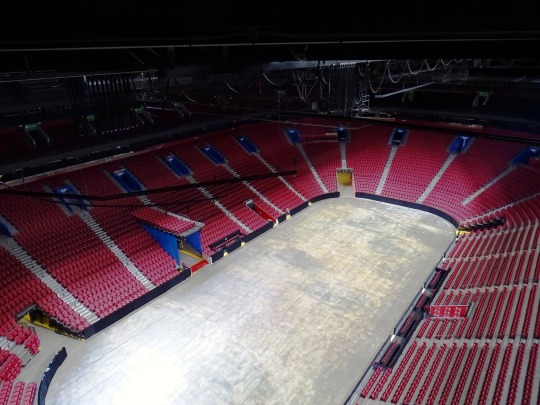


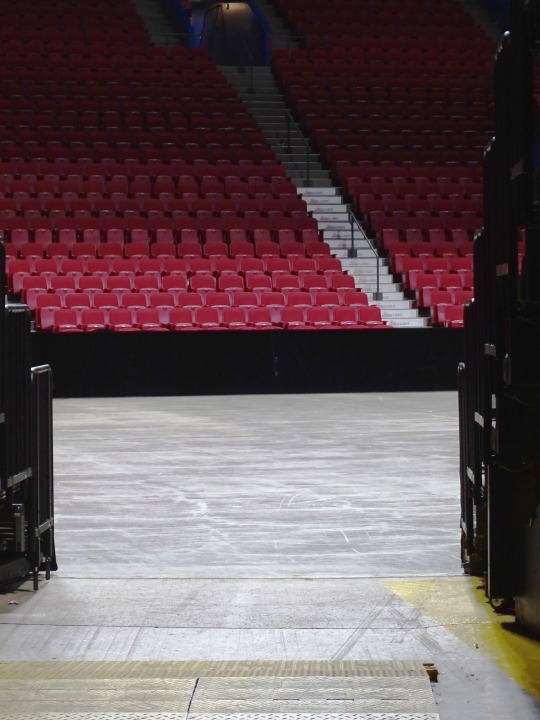

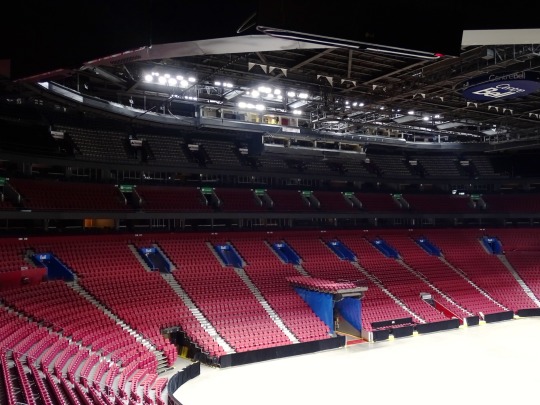




Construction of the Centre Bell began on the site on June 22, 1993.
#Howie Morenz#Guy Lafleur#Jean Beliveau#Maurice Richard#Centennial Plaza#Centre Bell#construction#started#22 June 1993#travel#30th anniversary#Canadian history#guided tour#logo#locker room#vacation#Montréal#Montreal Canadiens#the Habs#NHL#hockey#sport#original photography#summer 2018#tourist attraction#landmark#cityscape#interior#LeMay & Associate#LeMoyne Lapointe Magne
2 notes
·
View notes
Text
5: isn't it just so pretty
Invisible String Masterlist PREVIOUS NEXT AO3
On June 24th, Red Robin popped by Lucky Charms, but it was closed.
He then headed to 195 Andes Plaza but saw Damian glaring at him from the window and left.
Marinette was finishing preparing for her upcoming album release/tour and didn’t need to deal with inquisitive birds and bats right now.
The second story had a large room for the kwamis to play around in. The spacious garden out back, tended by Tikki, Pollen, Nooroo, Fluff, and Wayzz, was lush and blooming abundantly.
Tomorrow Fairy would release the album cover and name, then in a week the tracklist and another MV for her second single, Threads of Time. With the new info released, there would be more interviews. One would be with Clark and Lois.
So Damian protectively shooed his brother away from Marinette.
Chloe and Icarus would be going on tour as well, in the States and Europe. At least Bruce hadn’t questioned him when he requested to not begin working at WE till January, taking a gap half-year. There was the tour, the wedding, and planning the functions to do. He couldn’t be there for Mari and keep an eye on her health while he was busy acclimating to working at WE as well.
~~~~~
June 25th the Waynes were stunned by the cover of Fairy’s new album, Golden Ties. It was different from her debut album, Gossamer Wings. Gossamer Wings’ background was an iridescent, shimmering background with golden lines like butterfly wings curving up from the surface. Black italics spelled the title.
Golden Ties was a black background with loopy gold letters all connected spelling the title.
Fairy’s picture on the back of Gossamer Wings showed her back, with fairy wings attached. (Actually, they were her Ladybug wings and the background of the cover.)
On the back of Golden Ties was her profile in black, wearing her signature red lipstick and a plain gold masquerade-style domino.
July second, the tracks –all sixteen of them– were released, plus Threads of Time (MV).
Damian, as Icarus, appeared in it.
One of the songs, Emerald Eyes, was about him, though no one except him, Mari, Jagged and Penny, and Chloe knew that.
~~~~~
Fairy began the American leg of her tour in Gotham with Jagged.
The Waynes came, of course, minus Damian again but including Bruce this time.
Fairy sent Chloe with a note inviting them backstage after the show.
Chloe reported that they were happy to join her and that they had all (minus Bruce) squealed in excitement.
Once the backstage fans left, Icarus escorted his family to Mari’s dressing room.
“Hi! How have my ‘biggest fans’ been doing?"
“Great! This album is even better than your debut, and the concert was amazing!!”
“Thank you! Icarus inspired a lot,” she smiled at him in a way that the Bats could *tell* was reserved for him only.
"Did you know MDC was engaged to someone?” asked Bruce, not foregoing his detective tendencies even in the face of his children’s favourite artist.
“MDC is engaged? I didn’t know she made a press statement,” Fairy played dumb. “I did notice a lovely ring on her hand, though. She also seems quite close with whom I believe is your younger brother...Damian?”
“That’s him. Unfortunately, he had a previous engagement scheduled and couldn’t come tonight. I do know he actually quite enjoys your music.”
“High praise! I’ll have to tease him about it if MDC brings her man around!” Fairy giggled like her namesake. She turned to Icarus. “Remind me next time we see him?”
“Of course, Cherie. ”
~~~~~
Gold was the color of the leaves when I showed you around Centennial Park
Damian asked Jon to cover for him while he followed Marinette around the US. In return, Jon got MDC clothing and signed Fairy and Jagged Stone merch.
Jon was introduced to the kwamis, and Trixx was enlisted to create illusions of Damian and Marinette as needed. Kaalki was the MVP, opening portals regularly so Damian could maintain his presence in Gotham.
At the end of August, Fairy headed to Europe for the next leg of her tour. She hit all the capitals, saving Paris for last. Luka, Jagged, and Clara all joined her at different parts of the tour for surprise collabs.
Finally, the day came when Marinette arrived in Paris again. She hadn’t been since she wrapped up her and her parents’ affairs two years ago, and she was glad she was only there for a short while.
Damian portalled over, thanks to Kaalki, and they disguised themselves to go sightsee.
Marinette showed him Master Fu’s shop, the Couffaine houseboat, her grandparents’ house, and at last, the park by her old house, where she used to sketch.
The sunlight filtered golden through the leaves, the warm air blowing Marinette’s hair in her face.
Damian brushed it out of the way and handed her an elastic off his wrist.
She took it with a smile, grateful one of them could keep elastics close at hand.
They came out at the other end of the park, standing facing the corner where the bakery used to be.
Marinette’s grip on Damian’s hand tightened, and she wiped a tear away from her cheek.
“Let’s head back, mon ange .”
~~~~~
Hell was the journey but it brought me heaven
“Bonjour, Paris!” called Fairy the next night on the catwalk. “As many of you know, I’m originally from here. It’s good to be back!” And it really was, as she thought about it. With Damian by her side, her return had been much less painful than she had originally thought.
“As I wrote Lady Luck to pay homage to the Miraculous Team, I’m proud to perform it in their city! If you’re watching this, I hope you know how much we appreciate your hard work and selfless sacrifices!”
She knew the Couffaines were in the audience, and Chloe was backstage. Adrien and Kagami were planning their wedding for the week she was back, so she was unsure if they would be too busy to come or not. She had sent them tickets anyways.
Her guitarist played the opening riff, and she started the song.
~~~~~
Adrien and Kagami were married with Marinette and Damian in attendance. They planned to honeymoon in Osaka, then fly to Gotham for Marinette and Damian’s wedding. Two days later, Fairy and Icarus returned to Gotham.
Marinette and Damian’s long absences had been chalked up to wedding planning, which was true. Mari only wanted a small wedding–just friends and her few family members– and Damian didn’t want lots of fuss either. His family attending was enough fuss, considering all their drama, he grumbled to her once. She simply giggled and told him she was sure they would be on their best behaviour.
Wayne Manor had much larger grounds than Marinette’s house, so the ceremony was set to be held there.
Tikki, Wayzz, and Pollen definitely never snuck over to encourage the lush grass and flowering blossoms, and Trixx never aided and abetted by illusioning them. The greenery was all Alfred’s green thumb.
In between concerts, Mari sewed her wedding dress and Chloe’s maid of honour dress.
Damian’s tux and Jon’s suit were already prepared, and she collected what had been Gina’s veil while she was in Paris.
The final touches of embroidery were added in the last weeks before the wedding, and all the preparations ran smoothly, thanks to Chloe and Damian’s combined terrifying ruthless efficiency.
October 10th dawned clear and bright, sunny for once in Gotham.
(Marinette bet it was something to do with Tikki’s luck and cleansing accumulating in breaking down the curses on Gotham.)
As Chloe helped her dress she reflected that maybe she should be nervous, but she only felt happy and content. She was marrying her romantic soulmate today, what more could she ask?
(The whole week before she carefully avoided even thinking of anything that could go wrong, lest Plagg’s bad luck jinx them.)
Marinette surveyed herself in the mirror by the door as Tikki and Pollen slipped into their Chosen’s bouquets.
Her veil was her ‘something borrowed’, Tikki’s earrings her ‘something old’, her dress her ‘something new’, and the sapphire necklace Damian gifted her for her birthday her ‘something blue’.
The dress was scoop-necked white tulle over white silk, the layers creating a slightly flouffy skirt. It was simple and understated, but when the light shone on it, gold threads embroidered throughout the fabric became visible. The patterns ran from her slightly pouffed sleeves, down her fitted bodice, and branched off in the skirt. Many little mementoes and details important to her and Damian were stitched in it. Ladybugs, the league of assassins and the bat symbol, a needle and thread, masks for Fairy and Icarus, dates important in their relationship, like their first meeting, the day Damian proposed, the day they found each other in her shop.
Damian’s suit was black, but another gold thread wound throughout it, spots and feathers trimming the edges. Plagg had taken a liking to Damian, and she had occasionally let him practice with the ring, just in case he needed to use it, so a tiny pocket for Plagg was sewn into his suit as well.
The car pulled up to the flower strewn aisle, and Marinette gripped her bouquet, preparing to step out. The door opened and Bruce extended his hand.
She took it with a smile, sad that he wasn’t her own father but pleased that she could incorporate Damian’s into the programme.
Alfred, as the officiant, was waiting at the end of the aisle with Damian and Jon, Damian’s best man.
Damian’s jaw dropped as he saw Marinette walk down the aisle like a pageant queen, but he quickly closed it when Jon nudged him.
His eyes fell briefly to Tikki, hidden in the bouquet Mari held. She and the other kwamis had given him the equivalent of a shovel talk, which he took quite seriously, as he should. They all walked away from that conversation satisfied (and a little unsettled, on Damian’s end).
Damian met Marinette’s love-filled gaze and smiled widely at her, causing Dick, Bruce, and Alfred to tear up a little.
Tim, Steph, and Babs were a little surprised at how outwardly happy Damian was acting, but were pleased for him. Cass watched closely as Marinette took Damian’s hand and joined him in front of Alfred. Her hypothesis was confirmed when a faint golden glow appeared as they exchanged rings. Soulmates .
Bruce eyed his new daughter-in-law’s bouquet. He was sure something in it was watching him.
Plagg cackled quietly in Damian’s pocket.
After a lovely reception provided by Alfred and Wang Feng and Marinette’s cousin Fei, the newlyweds departed for parts unknown on their honeymoon.
In reality, they moved into 195 Andes Plaza. Relaxing at home sounded much better than jetting off after they’d just been on an extended world tour. Now was the time to be quiet and put down roots.
(It also had the added benefit of keeping the Batfam’s prying eyes off them, as the Bats didn’t expect them to be under their noses, still in Gotham. After all, who decided Gotham was a prime honeymoon destination? Only Damian and Marinette.)
4 notes
·
View notes
Text




#SupermanandLois season 3 finale turns 200 Granville Plaza in downtown Vancouver into Metropolis’s Centennial Station.
📸 : Richard Yeh
6 notes
·
View notes
Text
PERIOD OF ENLIGHTENMENT
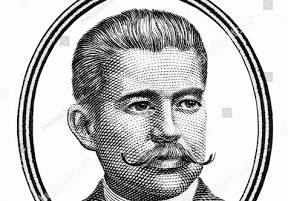
Marcelo H. del Pilar's reputation as a propagandist was already established before an order for his arrest forced him to flee the country in 1880. Gifted with the common touch, he found ready audiences in the cockpits, the plazas, and the corner tiendas of his native Bulacan. Unlike Rizal who wrote his novels in Spanish, a fact which cut him off from most Filipinos who did not know the language, del Pilar wrote his propaganda pamphlets in simple Tagalog -- lucid, direct and forceful. His parodies of the Our Father, the Hail Mary, the Apostle's Creed, the Ten Commandments and the catechism published in pamphlets which simulated the format and size of the novenas were highly effective propaganda.
https://www.google.com/url?sa=t&source=web&rct=j&url=http://msc.edu.ph/centennial/mhdpilar.html&ved=2ahUKEwiq4a6Ap9b-AhWA2DgGHYiQAkEQFnoECBcQAQ&usg=AOvVaw0WRhwmB4cV2GMNcVX9HWnZ
3 notes
·
View notes
Text
Information on 50501 Movement's Instagram at the time of writing indicates that meeting will take place at following times (local) and locations: • Arizona – State Capitol at noon • California – Capitol Building at noon • Colorado – Capitol Building at noon • Florida – Tampa City Hall at 3 p.m. • Georgia – Centennial Park at 2 p.m. • Idaho – Capitol steps at 11 a.m. • Illinois – Capitol Building at noon • Indiana - State Capitol Building at noon • Iowa – State Capitol at noon • Kansas – Capitol Building at 4 p.m. • Kentucky –Capitol Building at noon • Massachusetts – State House at noon • Michigan – State Capitol at noon • Minnesota – St. Paul Technical College at noon • Mississippi – State Capitol at noon • Missouri – Capitol Building at noon • Montana – State Capitol at noon • Nebraska – State Capitol at 4 p.m. • New Jersey – State House at noon • New Hampshire - State House at noon • North Carolina – State Capitol Building at noon • Ohio – Statehouse at noon and at Willard Park at 4 p.m. • Oklahoma - State Capitol at noon • Oregon – State Capitol Building at noon • Pennsylvania—State Capitol Complex at 11 a.m., Williams S. Moorewood Federal Building in Pittsburgh at 11 a.m., and at City Hall in Philadelphia at noon • South Dakota – Downtown Federal Courthouse at 3 p.m. • Tennessee – State Capitol at 1:30 p.m. • Texas – State Capitol at 11 a.m. and at the San Jacinto Plaza at 4 p.m. • Vermont – State Capitol at noon • Virginia - Bell Tower at 12:30 p.m. • Washington – Tivoli Fountain North Lawn at 2:30 p.m. • Washington, D.C. – Capitol Building at 11 a.m. • Wisconsin – State Capitol at 11 a.m.
What People Are Saying -- Think. Again. on Democratic Underground: "I believe it's just the first of many."

February 5, 2025.
Shit is getting real bad, real quick.
392 notes
·
View notes